Kelly Jensen's Blog, page 119
March 12, 2014
I love "unlikable," I write "unlikable," and I am "unlikable": Justina Ireland on "Unlikable" Girls
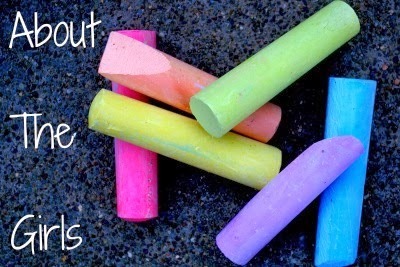
Now that we're clear on what an unlikable female character looks like in the wild, why don't we dive into that a little bit further and talk about why we need unlikable characters? Today, Justina Ireland -- who has had her own girl characters called unlikable -- talks about this label, what it means, and she offers a reading list of unlikable girls you should be reading.
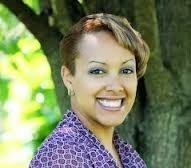 Justina Ireland lives in a house made of books. At least that’s the excuse she gives when people trip over one. When she isn’t accidentally killing house guests with her TBR pile she writes books. She is the author of Vengeance Bound and Promise of Shadows, both available from Simon and Schuster Books for Young Readers. When she isn’t reading she enjoys eating, sleeping, and watching Judge Judy on her DVR. You can usually find her on Twitter @tehawesomersace or at her website justinaireland.com.
Justina Ireland lives in a house made of books. At least that’s the excuse she gives when people trip over one. When she isn’t accidentally killing house guests with her TBR pile she writes books. She is the author of Vengeance Bound and Promise of Shadows, both available from Simon and Schuster Books for Young Readers. When she isn’t reading she enjoys eating, sleeping, and watching Judge Judy on her DVR. You can usually find her on Twitter @tehawesomersace or at her website justinaireland.com. There’s been a lot of talk lately of what people are calling “unlikeable”* main characters. If you haven’t heard any of the great discussion around unlikeable characters let me go ahead and break it down for you: unlikeable characters in YA (and beyond!) are female characters** that are flawed, usually unrepentantly. They have some seriously bad shortcomings, or sometimes just “unladylike” behaviors, and there is little motivation to change their conduct within the course of the novel. That isn’t to say that they don’t change by the end of the story, only that any sort of redemption and improvement of their character flaws is usually secondary to the overall plot.
Unlikeable characters aren’t perfect and they don’t try to be. They know they have faults and they’re okay with it because they have more important things to deal with.
And that is awesome.
I love “unlikeable” characters. I write “unlikeable” characters (or at least I try). And to be honest, I am an “unlikeable” character. I don’t sit quietly in a group. I won’t back down in an argument. I’m ambitious and arrogant and maybe a little bitchy just because I happen to feel like it. I will always suggest we do something I like and I will always have an opinion. I won’t stay quiet for the benefit of group harmony. If I get irritated I will tell you so and leave.
In other words, I am a real person with all of the complex emotions and feelings that being a humans have. And I’m not the only woman that happens to be that way.
The “unlikeable” character isn’t unlikeable because they aren’t funny or charismatic or, really, likeable. Let’s be honest, there has to be some degree of interest on the part of the reader to want to stick it out with a character for three hundred plus pages. The characters are unlikeable because they don’t conform to an established societal ideal of what it means to be female. Boys are allowed to be loud and disgusting and ambitious. They can disagree and forge ahead and be considered trailblazers and pioneers. They are allowed a full range of feelings and behaviors that women are not.
Women are supposed to be polite, smile, be harmonious. A woman that objects too loudly and too often is a bitch (there is even a verb form of the word meaning to complain). A woman who is ambitious is selfish, a woman that expresses fear is whiny and a woman that is too bold is irritating. A woman that doesn’t conform to some ephemeral ideal of femininity and doesn’t want to change her failings to conform to what is expected of her by society (and by extension, the reader) is a terrible character.
“Unlikeable.”
This double standard even extends to YA, where most rules of grown up books usually don’t apply. A girl that spends an entire book following around the boy she likes is psycho or pathetic. A boy that does the same thing is insightful. And that’s problematic. Is that really what we want to girls to learn, to teach them that their own impulses and thoughts are somehow less valid, less worthy, than a boy’s?
Female characters that are unlikeable are the best characters. They show us that our bad bits, as well as our good bits, are important to who we are. For too long women in literature have either been cardboard cutouts, scenery for the important doings of men, or non-existent. I want to read women who are angry, who are scared, who are ambitious and smug and all of the other things that make women real. Women who argue and speak up, or keep their thoughts to themselves and quietly fume while planning some nasty revenge. I want to read about women that aren’t simply put there as objects of attraction for the male main character or as smart sidekicks to help out the hero. I don’t want women who are there to be saved. I want women who save themselves with or without the help of others.
And I want to read these same characters in YA, where the leap from girlhood to womanhood is messy and fraught with danger and heartbreak and disappointment. I want to read about girls who are bitches and skanks and every other insult that can be hurled at a woman. I want the girls that survive, the ones that break in a million messy ways, the ones who turn their backs on everything they’ve known and forge their own paths, whether for better or worse. I want to read about bad decisions and worse decisions, about pride and arrogance and the drive for more. I want books that teach girls to be true to themselves, even if the person they are is more Disney villain and less Disney princess.
I want girls who are here to tell you their story, not be your friend or feature as a placeholder for reader romance. I want real girls.
“Unlikeable” girls.
So here are three of my favorite “unlikeable” main characters in YA, for your reading pleasure:
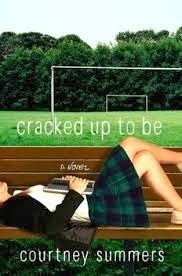 Parker Fadley, Cracked Up to Be: You knew I couldn’t make a list of unlikeable characters and not include a book by Courtney Summers. Her books are some of my favorites, and I picked Parker because she is the Summers character that I found to be the most unapologetic about her behavior. Parker knows that she’s being terrible, but she doesn’t care enough to stop. Sure, she has reasons for acting the way she does (but I won’t spoil the book for you) but instead of feeling bad and asking for help she feels bad and takes it out on everyone around her. And that is a completely valid response that many reviews took issue with. Why can’t Parker be nicer? Because she doesn’t have to be.
Parker Fadley, Cracked Up to Be: You knew I couldn’t make a list of unlikeable characters and not include a book by Courtney Summers. Her books are some of my favorites, and I picked Parker because she is the Summers character that I found to be the most unapologetic about her behavior. Parker knows that she’s being terrible, but she doesn’t care enough to stop. Sure, she has reasons for acting the way she does (but I won’t spoil the book for you) but instead of feeling bad and asking for help she feels bad and takes it out on everyone around her. And that is a completely valid response that many reviews took issue with. Why can’t Parker be nicer? Because she doesn’t have to be.
June Costa, The Summer Prince: June is ambitious and unapologetic. She knows she comes from a life of privilege and that she is spoiled, but it doesn’t stop her from using that privilege to get ahead. A number of reviews reacted negatively to this and a scene in which June is caught masturbating by her love interest, Enki. Rather than feel ashamed, June uses the moment as a sort of challenge to Enki, embracing her sexuality in a way rarely seen by girls in YA.
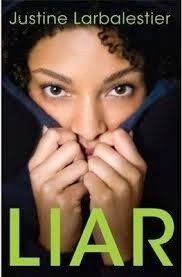 Micah, Liar: Micah is probably the first truly unlikeable main character that I read in YA. She’s a liar, and we know this because she tells the reader that. For the rest of the book she contradicts herself constantly and makes up facts that the reader will either believe or doubt. Either way, reviews absolutely hated Micah both as a person but also as an unreliable narrator.***
Micah, Liar: Micah is probably the first truly unlikeable main character that I read in YA. She’s a liar, and we know this because she tells the reader that. For the rest of the book she contradicts herself constantly and makes up facts that the reader will either believe or doubt. Either way, reviews absolutely hated Micah both as a person but also as an unreliable narrator.***Feel like spending some time with a few more messy characters? Here are a bunch of other books with “unlikeable” main characters you should check out:
The S-Word
This is Not a Test
Some Girls Are
The Disreputable History of Frankie Landau Banks
Uses for Boys
Tithe
Ironside
Since You Asked
Starglass
The Duff
A Midsummer’s Nightmare
Vengeance Bound and Promise of Shadows (you knew I had to mention my books)
Happy reading!
*the definition of unlikeable is, as always, a matter of opinion. For me it refers to female characters that do not conform to prescribed social behaviors of decency for women and in turn draw a considerable amount of reader ire. I have yet to see anyone refer to characters like Bella Swan as unlikeable. Weak, yes, but never unlikeable.
**The characters deemed “unlikeable” are always female. Always. I have never seen this term thrown about when men are the jerky main characters of the story, but I would love to be proven wrong.
***The fact that female characters of color in YA get slapped with the unlikeable label more often than their white counterparts could probably be its own discussion, but that is a post for another day.
***
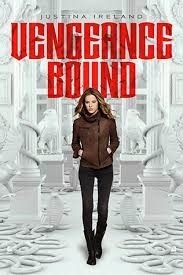
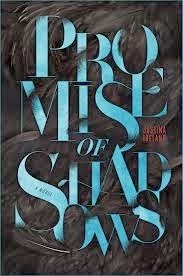
Justina Ireland is the author of Vengeance Bound, as well as Promise of Shadows, which published this week.







 Related StoriesThe Unlikable Female Protagonist: A Field Guide to Identification in the Wild -- Guest Post by Sarah McCarryCheryl Rainfield, A Hero for Girls: Guest Post by Jennifer BrownPositive Girl Friendships in YA: Guest Post by Jessica Spotswood
Related StoriesThe Unlikable Female Protagonist: A Field Guide to Identification in the Wild -- Guest Post by Sarah McCarryCheryl Rainfield, A Hero for Girls: Guest Post by Jennifer BrownPositive Girl Friendships in YA: Guest Post by Jessica Spotswood
Published on March 12, 2014 22:00
March 11, 2014
Cheryl Rainfield, A Hero for Girls: Guest Post by Jennifer Brown

One of the prompts I offered guest posters for this series was to talk about a female YA author who is admirable. Today, author Jennifer Brown is here talking about Cheryl Rainfield and why she admires and respects her and her work so much. This is a wonderful post, and if you aren't familiar with Rainfield, this should get you started.

Jennifer Brown is the author of acclaimed young adult novels Hate List, Bitter End, Perfect Escape, and Thousand Words. Her debut novel, Hate List, received three starred reviews and was selected as an ALA Best Book for Young Adults, a VOYA "Perfect Ten," and a School Library Journal Best Book of the Year. Bitter End received starred reviews from Publishers Weekly and VOYA and is listed on the YALSA 2012 Best Fiction for Young Adults list.
~
“Sometimes you have to be your own hero,” is the tagline on Cheryl Rainfield’s novel, STAINED, a story about a girl who is abducted and needs to look within herself for the courage to survive.
Every so often a reader who has gone through something traumatic asks me if I’d ever be interested in writing a version of her story. I always encourage the reader to consider writing the story herself. After all, she’s the one with the firsthand knowledge of the pain and confusion she has endured, and that knowledge brings power. Power to help herself through the writing of her journey; power to help others who might be going through something similar to what she’s experienced.
I know a little about this. I have made no secret of the fact that I was bullied in junior high and high school, and that the bullying I endured helped me write HATE LIST. I understood very well the emotions my characters were feeling and the thoughts they were thinking. My firsthand experience provided me with the passion to speak out against bullying, and to reach out to those who are being bullied, and tell my story in hopes that it might give a desperate teen something to hang onto (even if I only reach just one…it is a victory). Writing a version of my story has given me power over those long years of powerlessness.
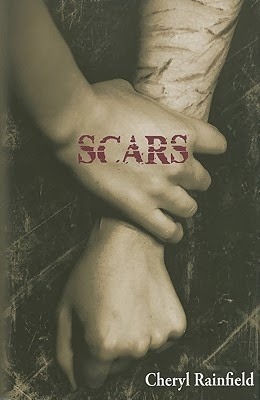 But when it comes to using past experiences as power, there is no greater female voice in YA than that of Cheryl Rainfield. A survivor of incest and torture, Cheryl understands exactly what it means to have to be your own hero. She escaped her horrific situation. She saved herself. She became her own hero, many times over. But, more than that, Cheryl somehow kept her grip on that power, and has used her writing to share it with others who need to see that possibility exists for them, too.
But when it comes to using past experiences as power, there is no greater female voice in YA than that of Cheryl Rainfield. A survivor of incest and torture, Cheryl understands exactly what it means to have to be your own hero. She escaped her horrific situation. She saved herself. She became her own hero, many times over. But, more than that, Cheryl somehow kept her grip on that power, and has used her writing to share it with others who need to see that possibility exists for them, too.Cheryl’s novels, SCARS, HUNTED, and STAINED, deal with subjects ranging from sexual abuse to self-harm to body image to abduction, and more, and feature strong female characters who must have the courage to fight and save themselves. Cheryl’s characters might find themselves in dark, seemingly- hopeless places, but they refuse to give up hope. They refuse to give up on themselves. They know that they are worth the fight.
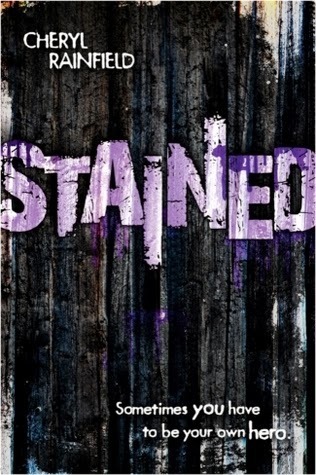 Cheryl’s unwillingness to shy away from subjects that are serious, somber, and gritty is what makes her books so important in the world of YA, and her empathy and steady drumbeat of hope are what makes them so impactful. Girls might see reflections of themselves in the dire situations of Cheryl’s characters…but at the same time, they might begin to see themselves as strong enough to leave those dire situations behind. Cheryl’s books show girls that they are not alone in their hell, a reassurance that can make the difference between survival and loss.
Cheryl’s unwillingness to shy away from subjects that are serious, somber, and gritty is what makes her books so important in the world of YA, and her empathy and steady drumbeat of hope are what makes them so impactful. Girls might see reflections of themselves in the dire situations of Cheryl’s characters…but at the same time, they might begin to see themselves as strong enough to leave those dire situations behind. Cheryl’s books show girls that they are not alone in their hell, a reassurance that can make the difference between survival and loss.I often say that my job, as a writer, is to create a character readers can see themselves in. To put that character into a familiar or imaginable situation. To give that character almost more than she can handle. And then—and this is the important part—to show that character a way out. To show her a reason to keep fighting. Or, to come back to Cheryl’s STAINED tagline, to show her that she can be quite heroic.
True, sometimes you have to be your own hero. Scratch that – often, you have to be your own hero. Sometimes, you are your only hope. Most of the time, you are the best hero for the job, anyway.
But sometimes there are other heroes out there, too. Heroes who are willing to talk about their pasts and share their experiences boldly. Heroes who are willing to lay their souls onto book pages and beg the frightened to come forward and see. Heroes, like Cheryl Rainfield, who are willing to show girls that they have that power within themselves. They are heroic.
***
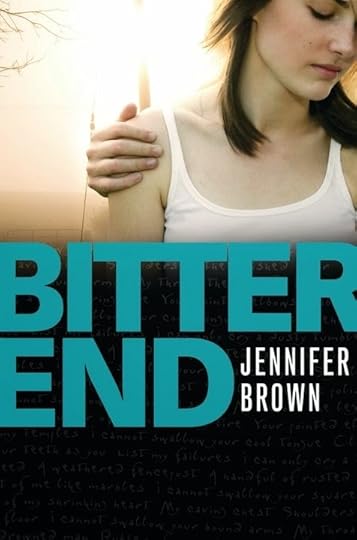

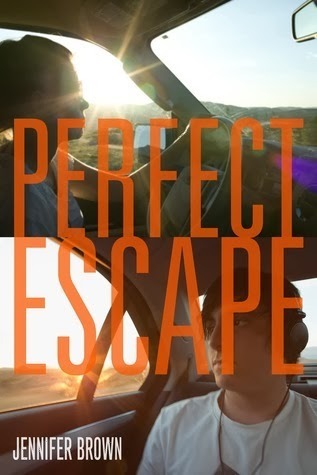
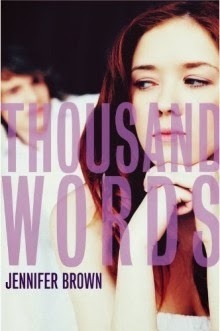
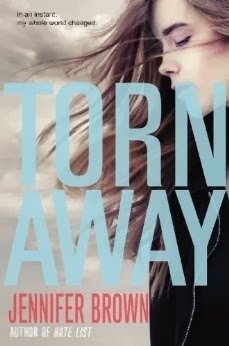
Jennifer Brown's Bitter End, Hate List, Perfect Escape, and Thousand Words are all available now. Torn Away will be available May 6.







 Related StoriesPositive Girl Friendships in YA: Guest Post by Jessica SpotswoodThe Unlikable Female Protagonist: A Field Guide to Identification in the Wild -- Guest Post by Sarah McCarryAbout the Girls: Series Kickoff
Related StoriesPositive Girl Friendships in YA: Guest Post by Jessica SpotswoodThe Unlikable Female Protagonist: A Field Guide to Identification in the Wild -- Guest Post by Sarah McCarryAbout the Girls: Series Kickoff
Published on March 11, 2014 22:00
March 10, 2014
Positive Girl Friendships in YA: Guest Post by Jessica Spotswood
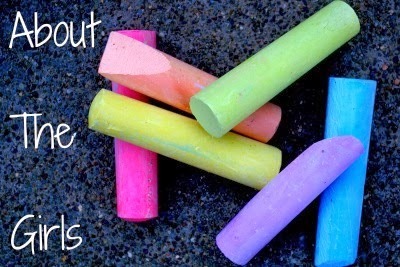
Is it rare to see girl friendships portrayed well in YA fiction? I tend to think that's an area where there are fewer books than there should be and those that do tackle this subject stand out because it's fairly rare. Today, Jessica Spotswood is here to talk about female friendship in YA, and I think she gets a little to the heart of why it might be a rare thing and why it's something she fought for in her own work.

Jessica Spotswood is the author of the Cahill Witch Chronicles: BORN WICKED (2012), STAR CURSED (2013), and SISTERS' FATE (August 2014). She grew up in a tiny, one-stoplight town in Pennsylvania, where she could be found swimming, playing clarinet, memorizing lines for the school play, or - most often - with her nose in a book. Now Jess lives in Washington, DC with her playwright husband and a cuddly cat named Monkey. She can be found drinking tea, teaching writing workshops for teens, or - most often - with her nose in a book. Some things never change.
When Kelly listed a range of possible topics for my guest post, one leapt out at me right away: friendships in YA. It's a subject that's near and dear to my heart, because I would be lost without my girl friends, but strong, positive girl friendships feel like a rarity in YA.
To be honest, they were a rarity in my life as a teen, too. There were lots of toxic friendships, the kind marred by gossip and jealousy and competition, whether it was over parts in the school plays or over boys. These kind of mean-girl dynamics tend to be super popular in YA (see: PRETTY LITTLE LIARS and GOSSIP GIRL). Two of my favorite examples of some truly vicious girls are in Courtney Summers' SOME GIRLS ARE and in Katherine Longshore's GILT. For less fraught examples, check out the friendships gone wrong between Samantha and Nan in Huntley Fitzpatrick's MY LIFE NEXT DOOR, or between Cricket and Jules in Leila Howland's NANTUCKET BLUE. I think girl-on-girl bullying, frenemies, and friend breakups are all important to portray.
It strikes me, though, that the most common girl friendships in YA are sort of token friendships - the best girl friends who recede into the background once the heroine meets the right guy. This is one of my literary pet peeves, possibly because it rings so true to my own high school experience. I was the single girl amidst lots of couples, with girl friends who only made time for me when they needed relationship advice or consolation after breakups. It made me realize early on how often we idealize romantic relationships and focus on them to the exclusion of all else, and it gave me an early feminist horror for making a boy the be-all and end-all of one's life. I know firsthand that that dynamic is super realistic - but I don't think it's emotionally healthy or ideal, and too often it seems to go unquestioned within the text. If most other girls are either rivals or placeholders until our heroines meet the boys of their dreams - what is that saying?
My editor for the Cahill Witch Chronicles is brilliant, and I take the vast majority of her suggestions. But the issue of Cate's friends Sachiko Ishida and Rory Elliott was one that I pushed back on. Sachi and Rory are popular, fashionable, gossipy girls and Cate - who's preoccupied with the need to protect her sisters and keep their magic a secret from the patriarchal Brotherhood - originally dismisses them as nothing but cabbageheads. But - spoiler - she's wrong. My editor suggested early on that one of them should be after Finn, that it could be more dramatic if they functioned as rivals with Cate in some way. But it was important to me that Cate be wrong in her original estimation, that she misjudges these pretty girls who love bright colors and dresses, who choose to hide their own secrets in plain sight instead of cloistering themselves away and disdaining feminine things. One of my favorite scenes in the entire trilogy is when Cate realizes how fierce and loyal and strong Rory is, and she's ashamed of how she's treated her. It was important to me that Cate find true girl friends - women who are generous and clever and talented and funny, who support her and won't let her face her problems alone - and that she realize their worth.
 I wish more YA books featured strong girl friendships - the kind worth every bit as much to the heroine as a boy, the kind who aren't shoved off stage or reduced only to giving relationship advice, who fight the monsters or evil government right alongside the heroine. Here are three girl friendships that I think are really, really awesome:
I wish more YA books featured strong girl friendships - the kind worth every bit as much to the heroine as a boy, the kind who aren't shoved off stage or reduced only to giving relationship advice, who fight the monsters or evil government right alongside the heroine. Here are three girl friendships that I think are really, really awesome:Rose and Lissa from the VAMPIRE ACADEMY series by Richelle Mead: This was the first example that came to mind, maybe because I just saw the movie! This friendship and the shadow-kissed bond between them are really at the heart of the series. Rose has to try to negotiate her romance around her loyalty to Lissa and her professional duty as Lissa's Guardian. There are elements of jealousy, of negotiating boundaries (especially since she has a psychic bond with Lissa), of figuring out how to define herself away from the friendship. It's an awesome, complex relationship that's every bit as important to both girls as their romances.
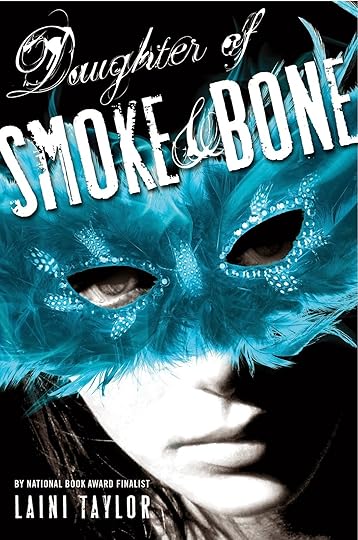 Karou and Zuzana from the DAUGHTER OF SMOKE & BONE series by Laini Taylor: I just read the novella "Night of Cake & Puppets" and it hit me again how special this friendship is. Karou and Zuzana are fiercely protective of one another. Zuzana knows that Karou is stronger than her in many ways, but she still threatens the jerk who broke her friend's heart. Karou is off having mad, dangerous adventures, but she still makes time to text Zuzana advice about Mik. Zuzana is Karou's link back to the everyday, human world; Karou provides the dash of magic Zuzana desperately wants. They balance each other in a really lovely, supportive way.
Karou and Zuzana from the DAUGHTER OF SMOKE & BONE series by Laini Taylor: I just read the novella "Night of Cake & Puppets" and it hit me again how special this friendship is. Karou and Zuzana are fiercely protective of one another. Zuzana knows that Karou is stronger than her in many ways, but she still threatens the jerk who broke her friend's heart. Karou is off having mad, dangerous adventures, but she still makes time to text Zuzana advice about Mik. Zuzana is Karou's link back to the everyday, human world; Karou provides the dash of magic Zuzana desperately wants. They balance each other in a really lovely, supportive way.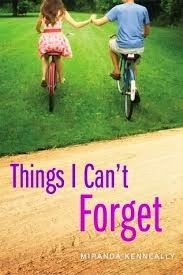 Kate and Parker from THINGS I CAN'T FORGET by Miranda Kenneally: Kate is a complex girl, which is why she's one of my favorite protagonists. She has very firm religious convictions that guide her every move, and at the beginning of the book she's incredibly judgey. She judges Parker, who's abandoned some of her church's teachings and whose mom is a lesbian. Parker calls Kate out when she's being hurtful, but over the course of the book, she becomes someone Kate can go to with frank questions about boys and sex and morality. Friends don't always agree on the big stuff, but I love how mutually respectful Kate and Parker are.
Kate and Parker from THINGS I CAN'T FORGET by Miranda Kenneally: Kate is a complex girl, which is why she's one of my favorite protagonists. She has very firm religious convictions that guide her every move, and at the beginning of the book she's incredibly judgey. She judges Parker, who's abandoned some of her church's teachings and whose mom is a lesbian. Parker calls Kate out when she's being hurtful, but over the course of the book, she becomes someone Kate can go to with frank questions about boys and sex and morality. Friends don't always agree on the big stuff, but I love how mutually respectful Kate and Parker are.What about you? I'd love to read about some of your favorite girl friendships in the comments.
***
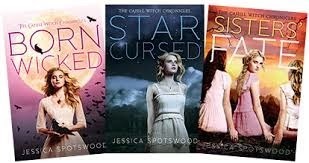
Jessica Spotswood is the author of the Cahill Witch Chronicles series, including Born Wicked, Star Cursed, and the upcoming conclusion, Sisters' Fate, available in August.







 Related StoriesThe Unlikable Female Protagonist: A Field Guide to Identification in the Wild -- Guest Post by Sarah McCarryAbout the Girls: Series Kickoff
Related StoriesThe Unlikable Female Protagonist: A Field Guide to Identification in the Wild -- Guest Post by Sarah McCarryAbout the Girls: Series Kickoff
Published on March 10, 2014 22:00
March 9, 2014
The Unlikable Female Protagonist: A Field Guide to Identification in the Wild -- Guest Post by Sarah McCarry
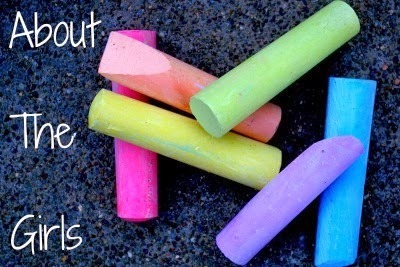
Let's kick off our series with what will be a very helpful post for those needing a little guidance to work through what many will be talking about over the next couple of weeks. Sarah McCarry is here to offer insight into the unlikable female protagonist.

Sarah McCarry (www.therejectionist.com & @therejectionist) is the author of the novels All Our Pretty Songs and Dirty Wings (summer 2014), and the editor and publisher of Guillotine, a chapbook series dedicated to revolutionary nonfiction.
THE UNLIKABLE FEMALE PROTAGONIST: A FIELD GUIDE TO IDENTIFICATION IN THE WILD
INTRODUCTORY REMARKS
Considerable debate has been devoted to the subject of the Unlikable Female Protagonist, a common pest of the natural world. While it is not our intent here to contribute to the extensive literature on her value as an object of study, we hope that by clarifying and outlining her identifying characteristics we may make a valuable and practical addition to the current research being conducted in the field.
HABITAT
The Unlikable Female Protagonist (UFP) is indigenous to a highly diverse spectra of ecosystems, climates, and geographical zones.
RANGE
Global; she may also be found in a variety of uniquely fictive environments, including but not limited to magical kingdoms, future dystopias, re-imagined historical settings, re-told fairytales, Forks, Washington, and a a web of filth, sexual perversions, alcohol, and smoking.
DESCRIPTION
ADULT and JUVENILE specimens of the UFP share a number of common characteristics and behaviors, and it is difficult to distinguish them in their natural habitats. Likewise, isolating the UFP in a group of Likable Female Protagonists may prove an insurmountable task for the casual observer; even researchers with extensive background in the field are frequently stymied when asked to assess physiological and behavioral differences between Likable and Unlikable Female Protagonists.
Complicating identification further, a Previously Likable Female Protagonist may transition suddenly into a UFP via the application of a traumatic event, such as sexual assault, parental abandonment, death of family member or friend, discovery of previously unknown supernatural power, crushing out on werewolves, puberty, etc. Notably, rather than process her response via culturally acceptable techniques such as quietly journaling alone, attending therapy, dressing nicely, and remaining chipper but not overly perky, the UFP expresses her distress via characteristic behaviors including but not limited to promiscuous sexual activity, drinking alcohol and attending rock concerts, disrespecting her parents, being a bitch, being a whiny, annoying, total bitch, being a conceited bitch, being a heartless bitch, being a shallow, narcissistic bitch, being a hypocritical, coldhearted beeyotch with a stick up her ass, being dirty, attending a diverse high school, being Muslim, living with a disability, being cleverer than Harry Potter, finding a man who is stupid enough to love her, masturbating, being afraid of her emotions, detaching herself from her emotions, and swearing. Yeah she had a bad past, with her absent dad, butthole boyfriend, and an unexpected pregnancy/subsequent abortion, but she is a whiny brat.
These, of course, are not the sole identifiers of the UFP, and merely existing may serve as trauma enough to effect a transition from Likable to Unlikable. The UFP is also feminist, not feminist enough, is too cheerful, overachieves, has pink hair, and does not criticize her love interest for putting up posters of attractive women on motorcycles. Additionally, the UFP may be precocious, a moron, irresponsible, too glamorous, too fat, too anorexic, too fixated on older men, gay, passive, arrogant, and not feminine enough. She has male friends, is obsessed with sex, is too rich, is too poor, talks too much about racism, and is generally detestable, selfish, and possessed of solely first-world problems. Having cancer is no excuse for her whining, unless she is written by a man. She is overly forgiving, pathetic, a HUGE wussy/complainer, unremarkable, vapid, the kind of girl who feels the need to expose herself to a guy she doesn't know, overly forceful, and self-righteous. She would give IT up wayyyy too easily. She is, quite simply, an idiot.
While inexperienced researchers may express confusion about the apparently contradictory nature of the UFP's behaviors, the obvious unifying factor among them is the fact that the UFP is always, as her name suggests, female.
ADDITIONAL NOTES
Female Protagonists may only ever be subdivided into "Likable" and "Unlikable"; for Fully-Developed Human Beings, refer to "Men."
DISCUSSION AND OBSERVATION TIPS
As noted above, isolating and identifying the UFP in natural environments is a challenging task for the researcher. While she may elect to self-identify by donning goth clothing or applying black eyeliner, it is as likely that she will be visually indistinguishable from her likable counterparts. The UFP is so common, in fact, that naturalists might be better served by devoting their energies to searching out the Likable Female Protagonist instead, a creature so rare and elusive that some researchers suggest she is extinct, or in fact a figment imagined by overly enthusiastic graduate students in the humanities. At any rate, delineating the behaviors of the Likable Female Protagonist, should they be definable, is outside the scope of the present paper.
***


Sarah McCarry's All Our Pretty Songs is available now and Dirty Wings will be available in July.







 Related StoriesAbout the Girls: Series KickoffSeries ConclusionsGuest Post for the Courtney Summers Read Along
Related StoriesAbout the Girls: Series KickoffSeries ConclusionsGuest Post for the Courtney Summers Read Along
Published on March 09, 2014 22:00
March 8, 2014
About the Girls: Series Kickoff

I mentioned this week kicking off a two-week series in yesterday's links of note post, but in the event you missed that, here's an official post!
Tomorrow kicks off a two-week series here at Stacked all about girls in YA. I reached out to ten female YA authors, and all of them signed on to writing about either female YA authors, female YA characters, or broader topics about girls in YA. You will get to read about female authors who are putting themselves out there in a big way through their work. You will get to read about books featuring female characters that made a huge impact. And you will read a lot about "unlikeable" female characters.
The prompt I provided the guests was very open, and the responses reflect that in a really neat way. I hope that through this series, you'll walk away thinking about girls and girls reading and you'll walk away with a massive to-read list, both from the posts and from those who wrote the posts.
Although I didn't put a formal request out widely, I would be so interested in reading other posts throughout the next couple of weeks from other bloggers and readers interested in talking about their favorite female YA authors, favorite female YA characters, or any topic relating to girls and YA. If you write something, whether in a blog post, on tumblr, whatever your platform of choice, please share it with me. You can drop those posts right here in the comments. I'll do a roundup at the end of this series of posts you've written and share them even wider.







 Related StoriesSeries Conclusions
Related StoriesSeries Conclusions
Published on March 08, 2014 22:00
March 7, 2014
Links of Note: March 8, 2014
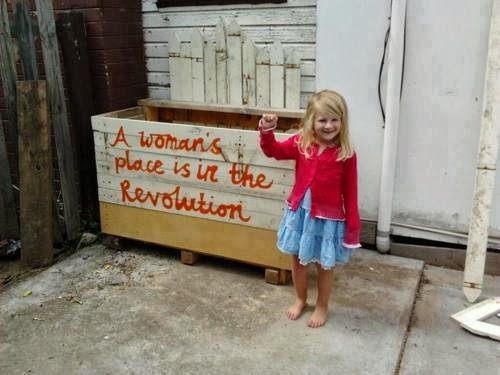
Happy International Women's Day!
I'm in denial that the Public Library Association conference is this week, as it doesn't feel like March yet around here. If you're going to be in Indianapolis for the event, you can come hear me speak on either "new adult" fiction or about effective, dynamic teen programming. I'm only sticking around for Thursday, so I hope if you're going, I get the chance to bump into you.
Here's a serving of links from the last couple of weeks. If you've read anything great lately, let me know in the comments:
Speaking of PLA presentations, in preparation, Sophie updated the resources page we have at the reader's advisory chat blog. So if you want to know anything about "new adult" fiction, you're covered here.
Liz Burns talks about the Rachel Canning case, and in doing so, she highlights YA books where teens have moved out of their homes. A lot of recent talk about likability lately (and oh so much more to come) lead Jenny Arch to writing about the topic herself. Have you been following the sexual violence in young adult project from Teen Librarian Toolbox? You should check it out. This week, there were two excellent posts from authors Christa Desir and Carrie Mesrobian on the topic of consent in YA that are well-worth reading. TLT's Karen also wrote about consent in YA lit. Are you a fan of the backlist? Simon & Schuster's begun a new project all about backlist -- and it's not limited to their own titles. Check it out. I have been really looking forward to reading danah boyd's It's Complicated: The Social Lives of Networked Teens and lucky me, it's available as a free download. If you work with teens or care about their lives and interactions in the digital world, I suspect it's a title you'll want to check out, too. Publishers Weekly last week wrote about the shifting and changing children's book market, and it's fascinating (and complex and a little conflated). The piece that fascinated me the most was that 78% of those who purchase YA are 18 and older -- aside from the fact that it shows adults are buying YA books, it doesn't tease out a lot of the factors here. Credit cards aren't things teens have easy access to, and if they do, it's a parent's card. It doesn't pull out the adults buying for teens. Take the numbers with a grain of salt, rather than as signifiers of something significant. Dahlia Adler put together a compendium to QUILTBAG young adult and new adult. The first half leans a little more toward those who are seeking representation for their work, but the second half is a really worthwhile reading list of recent and forthcoming LGBTQ titles. The seasonal children's book preview is up for Fall 2014 at Publishers Weekly, if you want to jam your to-read lists a little more. My friend Anne recently put together an unconference for children's librarians in Michigan, and I love how she talks about coming up with the idea and putting the entire show together.
Here's where else I've been lately:
At Book Riot, I talked about why the VIDA count matters and how women have always written great books . . . they just haven't been recognized for it. Also at Book Riot, it was my turn for book fetish, and I found not only an amazing $1600 "Archie" clutch, but I also found some really neat (and affordable) book luminaries.
Coming up:
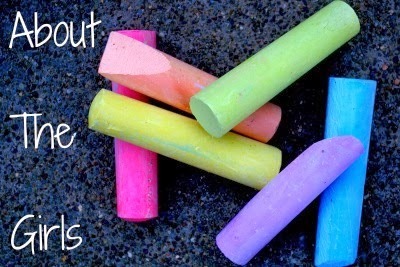
Starting Monday and running through the end of next week is a series I'm so excited to put together and share. In honor of women's history month, as well as in light of ongoing discussions of gender, representation, likability, and more, I thought it would be great to ask a host of female YA authors to weigh in on their favorite female YA authors, their favorite female YA characters, or any other topic relating to girls and YA.
We have 10 excellent, thoughtful, fun, and interesting guest posts lined up from Jennifer Brown, Elizabeth Scott, Sarah Stevenson, Morgan Matson, Sarah McCarry, Sarah Ockler, Corey Ann Haydu, Kirstin Cronn-Mills, Justina Ireland, and Jessica Spotswood. Prepare to walk away with massive reading lists, as well as opportunities to dig in and talk more about girls and girl reading in YA.







 Related StoriesLinks of Note: February 22, 2014Links of Note: February 8, 2014Links of Note: January 25, 2014
Related StoriesLinks of Note: February 22, 2014Links of Note: February 8, 2014Links of Note: January 25, 2014
Published on March 07, 2014 22:00
March 6, 2014
I'm running for the 2016 Printz Committee
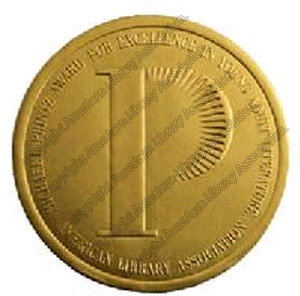
You might remember that last summer I petitioned for a spot on the 2016 Printz Committee ballot. I got enough petition signatures to make it happen, and with the elections opening on March 19 -- just a week and a half from now -- I thought I'd formally announce that I am indeed on the ballot and give a little further information about my qualifications for those who are eligible to vote.
If you're a YALSA member, you'll get your ballot sometime that week, and you'll have through the end of April to vote. I'd be honored if you'd vote for me for Printz. Here are my qualifications:
- I understand the award. This isn't a popularity award and it's not about best appeal. The Printz is about rewarding outstanding literary merit.
- That said, I've been working with teens and teen literature since 2009, when I graduated from library school and moved across the country. I worked for a year and a half as a reference and teen librarian, moved on to a youth services position, then back to a reference and teen position for the last couple of years. I've always been responsible for selection, as well as reader's advisory, for teens.
- All of my jobs have been in the midwest, first in a Rockford, Illinois suburb, then in a small Wisconsin town, and now in a semi-urban Wisconsin town. I bring up where I've worked because I not only think it brings a different perspective and element of diversity to the committee in terms of experience, but I also bring it up because my experiences are tied to where I am. I don't have big city nor big state resources at my fingertips, and the opportunities I've had with YALSA and via the CYBILS, as well as via blogging and writing for professional journals, have been extremely valuable and important to me.
- I've been blogging here since 2009 as well, and I like to think I'm able to critically and thoughtfully talk about YA lit. I'm comfortable reading and assessing a wide range of YA fiction.
- On the topic of blogging, I wrote for YALSA's The Hub blog for a year and a half.
- In 2009, 2010, and 2011, I served on the CYBILS. All three years, I was part of the YA fiction judging panel, in 2009 on round two and in 2010 and 2011 on the round one panel. This meant I read a lot of books, discussed a lot of books, and did so in a short period of time. I learned how to work with and within a committee structure. I'm able to offer my own thoughts on books, as well as listen to and work with the thoughts others bring to books.
- In 2012, I served as the administrative assistant on the Alex Awards committee. It was my duty to be a point of contact to and for the publishers and coordinate requested titles, track their arrivals, and follow up on any questions regarding the committee and its process. At ALA and ALA Midwinter that year, I sat in on those committee discussions and got a first-hand look at how the process works for an awards committee.
- In 2013, I served on Outstanding Books for the College Bound. I read, discussed, and and worked with the committee to craft the list that is published every 5 years.
- I have published widely on the topic of YA fiction. I've written for The Horn Book, for VOYA, School Library Journal, and more. You can read my entire publication history here, if you're interested.
- I've presented on the topic of YA fiction, as well. My presentation history is here.
- I am eager and willing to put in the time and effort to be a part of the committee. I have a very flexible job, and I'm able to attend both ALA events. Even though I am not financially supported by my institution -- and never have been for any of my committee roles -- it is a priority and an honor to me to to volunteer, and thus, I am able to make it happen.
I chose to petition for the Printz ballot because it's a committee I have dreamed of being a part of since I began my career in teen librarianship. This was my opportunity to put myself out there for the possibility of making it happen. I've been active and involved in the YA lit world, and I believe I'm able to bring my knowledge and experience to the table, as well as sit embrace the knowledge and experience of other people on the committee.
I've spent a long time considering, too, what would happen here and at Book Riot were I to be elected, and honestly, I'm not worried. I would be unable to talk about current titles, but knowing how much there is TO talk about books, it's not a concern of mine. I'm good at prioritizing and planning and being organized -- all skills that'll be beneficial on the committee -- so finding a way to keep writing without talking about what I can't talk about isn't something I'm worried about.
I'm purposefully not talking about my favorite Printz books in this post because that's coming soon elsewhere. I'll link them when they go live, but I've been graciously given some space over at YALSA's blogs to talk about my candidacy, and I've also been given space at a couple of other blogs run by librarians I admire to talk.
It's really weird to talk about myself like this, because while I'm confident in my abilities, it's uncomfortable to feel like I'm advertising myself here. But here it is, and I'm going to wrap up this post by highlighting two other folks on the Printz ballot in 2016 you should know: Lalitha Nataraj and Paige Battle. Lali I've known for a few years via social media, and she's been involved with the Amelia Bloomer Project. I know Paige from the Alex Awards committee, where she's served the last two years. Both would be excellent members of the committee, bringing great perspectives and insights into the discussion. (And selfishly, I'd love to work with both of them, too).








Published on March 06, 2014 22:00
March 5, 2014
Get Genrefied: Fairy Tale Re-tellings
Fairy tale re-tellings never go out of style. They were huge when I was a teen and they continue to be in demand now, though it seems the trend has shifted some from outright fantasy to a more science fiction-inspired flavor. Authors are also trying their hand at re-telling fairy tales in a completely realistic way, eschewing any sort of magic or futuristic technology. (Jane Nickerson's historical re-tellings of Bluebeard and Tam Lin are good examples.) So while fairy tale re-tellings are most often a subgenre of fantasy, that's not always the case. Like many of the other genres we've written about, fairy tale re-tellings can and do cross genres.
It's no surprise that fairy tale re-tellings have tremendous staying power, given how versatile they can be. As readers, I think we like the combination of the familiar and the strange; we are naturally curious to see how an author can transform something so old and well-known into something new and unusual. There's also something timeless about the original, bare-bones stories themselves. In many ways, fairy tales are the most basic of our stories, and even the most intricately-plotted of our modern tales usually draw from some sort of trope first found in a fairy tale or folk tale.
In my experience, teens are drawn to fairy tale re-tellings for the romance and adventure. The protagonists usually also go from a place of no power to a place of tremendous power, whether through the use of magic or simple resourcefulness. This is incredibly appealing to teens who may feel that they have zero power over their own lives.
While this guide will focus primarily on fairy tale re-tellings, teens who read them may also enjoy re-tellings of other classic stories, such as mythology, Robin Hood, King Arthur, Shakespeare, Bronte, and others. Epic Reads has created a truly Epic Chart of 162 Young Adult Retellings that covers a lot of this territory. It's well worth a look.
A few authors who are known for writing fairy tale re-tellings include Donna Jo Napoli, Robin McKinley, Cameron Dokey, Alex Flinn, and Jackson Pearce. Some of their books were published when I was a teen (or before!), but fairy tale re-tellings tend to stand the test of time a bit better than other sorts of stories. Their source material is timeless, after all. Provided they're not modernized re-tellings or saddled with dated covers, even 10 or 20 year old books should suit teen lovers of the genre just fine.
Simon Pulse published about 20 fairy tale re-tellings for teens between 2002 and 2010 written by various authors including Suzanne Weyn, Cameron Dokey, Debbie Viguie, Tracy Lynn, and Nancy Holder. A full list of those titles can be found at Simon and Schuster's Once Upon a Time website.
Below are a few YA fairy tale re-tellings published within the past five years (roughly), grouped by original story. Descriptions are from Worldcat or Goodreads. Are there any glaring omissions?
Beauty and the Beast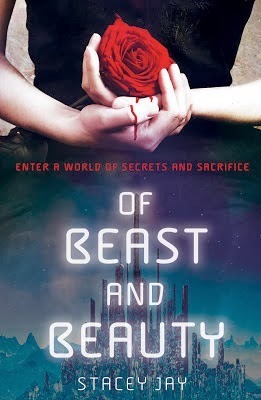
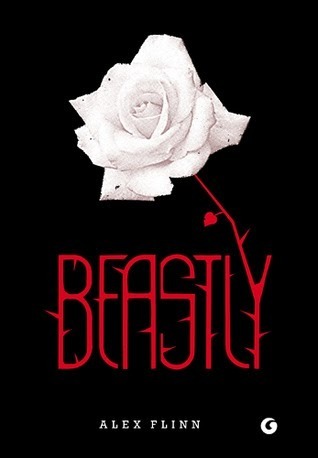
Of Beast and Beauty by Stacey Jay
When nineteen-year-old Gem of the Desert People, called Monstrous by the Smooth Skins, becomes the prisoner of the seventeen-year-old Smooth Skin queen, Isra, age-old prejudices begins to fall aside as the two begin to understand each other.
Beastly by Alex Flinn
A modern retelling of "Beauty and the Beast" from the point of view of the Beast, a vain Manhattan private school student who is turned into a monster and must find true love before he can return to his human form.
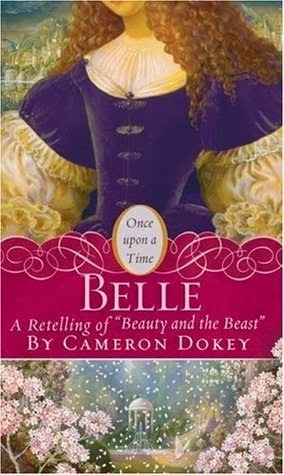
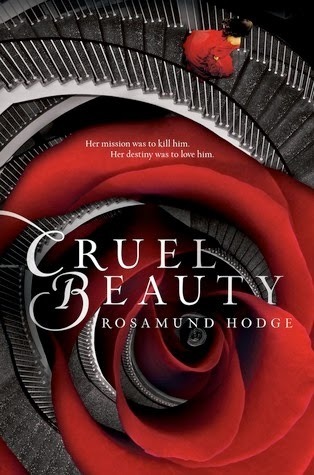
Belle by Cameron Dokey
In this retelling of the traditional tale, Belle, a skilled woodcarver, must carve the the legendary Heartwood to repay her father's debt to a fearsome beast that gave him shelter during a terrible storm.
Cruel Beauty by Rosamund Hodge
Since birth, Nyx has been betrothed to the evil ruler of her kingdom -- all because of a foolish bargain struck by her father. And since birth, she has been in training to kill him. With no choice but to fulfill her duty, Nyx resents her family for never trying to save her and hates herself for wanting to escape her fate. Still, on her seventeenth birthday, Nyx abandons everything she's ever known to marry the all-powerful, immortal Ignifex. Her plan? Seduce him, destroy his enchanted castle, and break the nine-hundred-year-old curse he put on her people. Kimberly's review
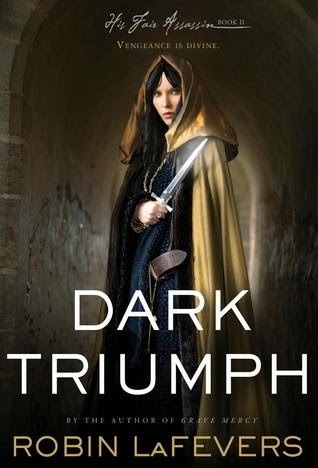
Dark Triumph by Robin LaFevers
Sybella's duty as Death's assassin in 15th-century France forces her return home to the personal hell that she had finally escaped. Love and romance, history and magic, vengeance and salvation converge in this sequel to Grave Mercy. Kimberly's review
Bluebeard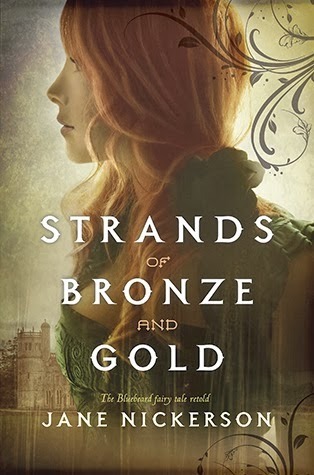
Strands of Bronze and Gold by Jane Nickerson
After the death of her father in 1855, seventeen-year-old Sophia goes to live with her wealthy and mysterious godfather at his gothic mansion, Wyndriven Abbey, in Mississippi, where many secrets lie hidden. Kimberly's review
Cinderella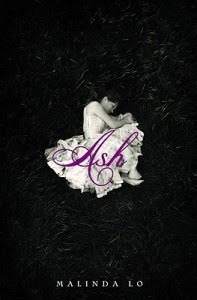

Ash by Malinda Lo
In this variation on the Cinderella story, Ash grows up believing in the fairy realm that the king and his philosophers have sought to suppress, until one day she must choose between a handsome fairy cursed to love her and the King's Huntress whom she loves.
Before Midnight by Cameron Dokey
In this retelling of the Perrault fairy tale, Cendrillon's father, grief stricken over the death of his wife, leaves his baby daughter to be brought up by servants together with an unidentified infant boy until the day, sixteen-years-later, when a new stepmother with two daughters arrives and changes their lives forever.
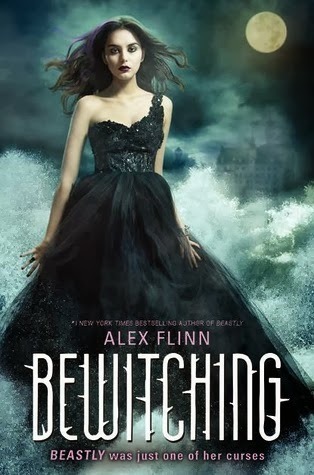
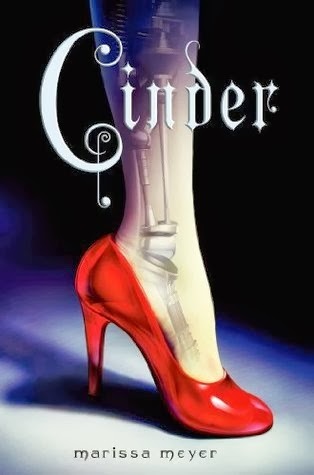
Bewitching by Alex Flinn
Tells the story of Kendra, a witch, and the first three-hundred years of her life, including takes on a classic fairy tale, the 1666 plague in Britain, the Titanic disaster, and the story of a modern-day, plain stepsister.
Cinder by Marissa Meyer
As plague ravages the overcrowded Earth, observed by a ruthless lunar people, Cinder, a gifted mechanic and cyborg, becomes involved with handsome Prince Kai and must uncover secrets about her past in order to protect the world in this futuristic take on the Cinderella story. Kimberly's review

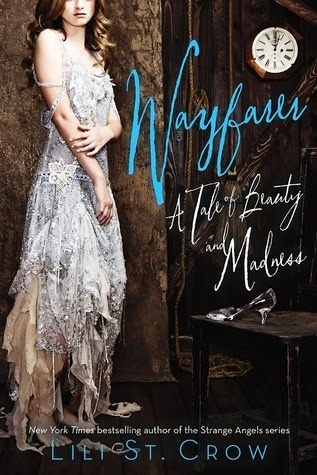
Shadows on the Moon by Zoe Marriott
Trained in the magical art of shadow-weaving, sixteen-year-old Suzume, who is able to re-create herself in any form, is destined to use her skills to steal the heart of a prince in a revenge pot. Kimberly's review
Wayfarer by Lili St. Crow
In this retelling of Cinderella, Ellen Sinder's violent stepmother terrifies her, her plan for surviving and getting through high school quietly begins to unravel, and Auntie, an odd old woman who takes her in, may not be as kindly as she appears.
East of the Sun, West of the Moon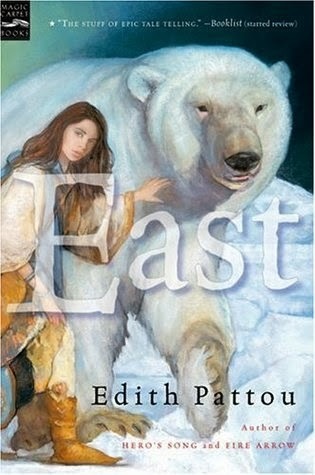
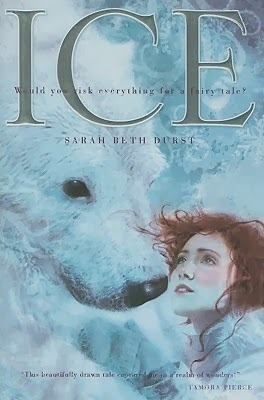
East by Edith PattouA young woman journeys to a distant castle on the back of a great white bear who is the victim of a cruel enchantment.
Ice by Sarah Beth DurstA modern-day retelling of "East o' the Sun, West o' the Moon" in which eighteen-year-old Cassie learns that her grandmother's fairy tale is true when a Polar Bear King comes to claim her for his bride and she must decide whether to go with him and save her long-lost mother, or continue helping her father with his research.
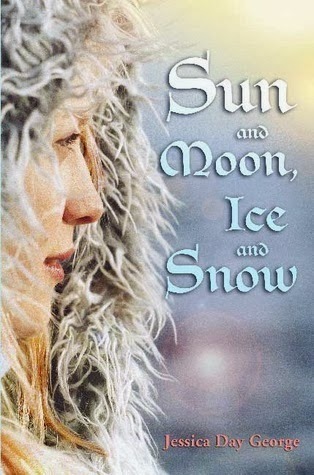 Sun and Moon, Ice and Snow by Jessica Day George A girl travels east of the sun and west of the moon to free her beloved prince from a magic spell.
Sun and Moon, Ice and Snow by Jessica Day George A girl travels east of the sun and west of the moon to free her beloved prince from a magic spell.
The Frog Prince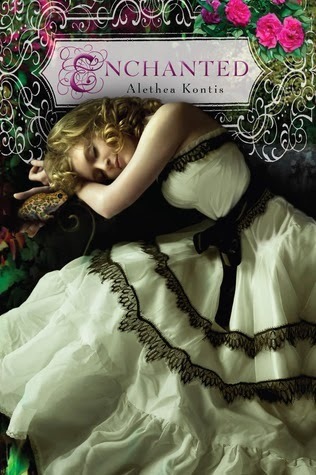
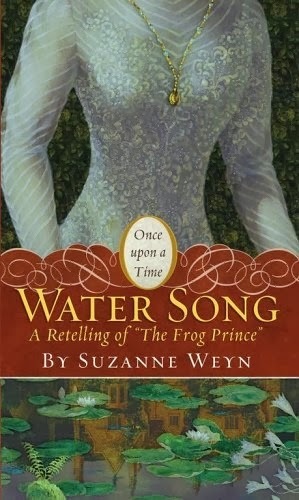
Enchanted by Alethea Kontis
When Sunday Woodcutter, the youngest of seven sisters named for the days of the week, kisses an enchanted frog, the frog transforms back into Rumbold, the crown prince of Arilland--a man Sunday's family despises.
Water Song by Suzanne Weyn
Stranded in war-torn Belgium, Emma Pennington finds a wounded American soldier carrying vital information for the Allies and protects him from the Germans occupying her family estate.
The Goose Girl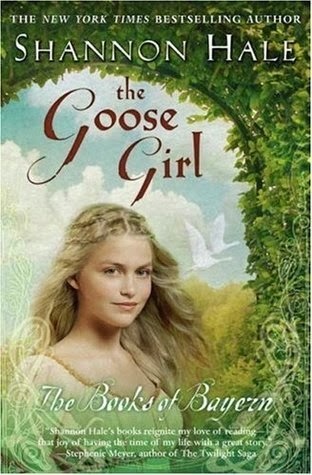
The Goose Girl by Shannon Hale
On her way to marry a prince she's never met, Princess Anidori is betrayed by her guards and her lady-in-waiting and must become a goose girl to survive until she can reveal her true identity and reclaim the crown that is rightfully hers.
Hansel and Gretel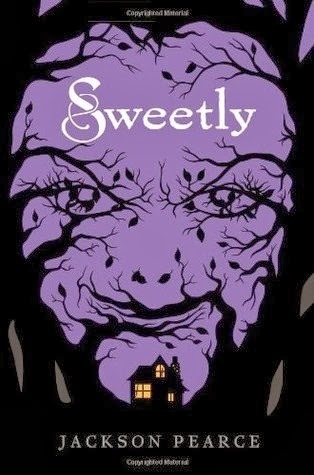
Sweetly by Jackson Pearce
When the owner of a candy shop molds magical treats that instill confidence, bravery, and passion, eighteen-year-old Gretchen's haunted childhood memories of her twin sister's abduction by a witch-like monster begin to fade until girls start vanishing at the annual chocolate festival.
Jack and the Beanstalk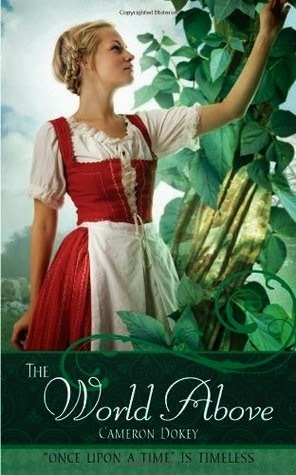 The World Above by Cameron DokeyWhen her twin brother, Jack, disappears after scaling a magical beanstalk in an effort to reclaim their destitute family's riches, Gen enters the mysterious "Land Above" and confronts a dangerous giant, in a reimagining of the classic tale, "Jack and the Beanstalk."
The World Above by Cameron DokeyWhen her twin brother, Jack, disappears after scaling a magical beanstalk in an effort to reclaim their destitute family's riches, Gen enters the mysterious "Land Above" and confronts a dangerous giant, in a reimagining of the classic tale, "Jack and the Beanstalk."
The Little Mermaid
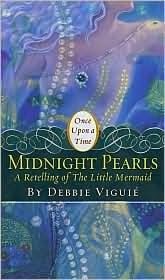
Fathomless by Jackson Pearce
Celia, who shares mental powers with her triplet sisters, finds competition for a handsome boy with Lo, a sea monster who must persuade a mortal to love her and steal his soul to earn back her humanity.
Midnight Pearls by Debbie Viguie
A retelling of "The Little Mermaid" in which Pearl, a teenaged girl who was discovered in the sea as a small child by a fisherman and treated with scorn by the villagers ever since, falls in love with James, a prince, and faces powerful forces--human and magical--determined to tear them apart.
Little Red Riding Hood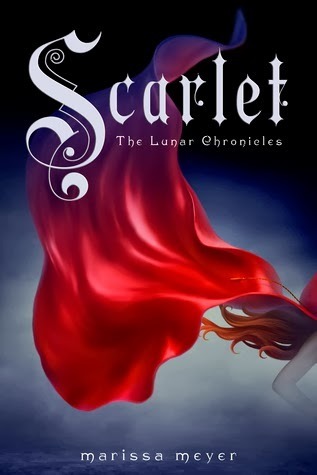
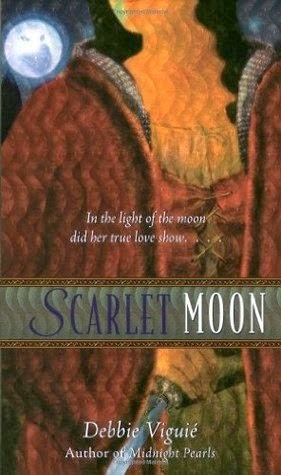
Scarlet by Marissa Meyer
Scarlet Benoit and Wolf, a street fighter who may have information about her missing grandmother, join forces with Cinder as they try to stay one step ahead of the vicious Lunar Queen Levana in this story inspired by Little Red Riding Hood. Kimberly's review Scarlet Moon by Debbie ViguieRuth's grandmother lives in the forest, banished there for the "evil" that the townsfolk believed she practiced. Amidst these dark days, a new man enters Ruth's life. William is a noble with a hot temper and a bad name, and he makes her shiver. But the young man is prey to his heritage, a curse placed on his family ages ago, and each male of the family has strange blood running in his veins. Now Ruth must come face-to-face with his destiny at Grandma's house.
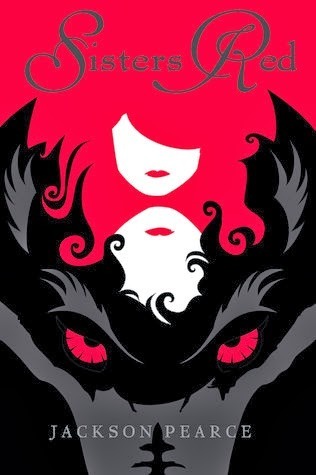
Sisters Red by Jackson Pearce
After a Fenris, or werewolf, killed their grandmother and almost killed them, sisters Scarlett and Rosie March devote themselves to hunting and killing the beasts that prey on teenaged girls, learning how to lure them with red cloaks and occasionally using the help of their old friend, Silas, the woodsman's son. Kimberly's review
Maid Maleen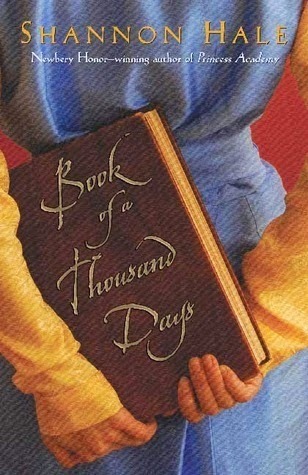
Book of a Thousand Days by Shannon Hale
Fifteen-year-old Dashti, sworn to obey her sixteen-year-old mistress, the Lady Saren, shares Saren's years of punishment locked in a tower, then brings her safely to the lands of her true love, where both must hide who they are as they work as kitchen maids.
Rapunzel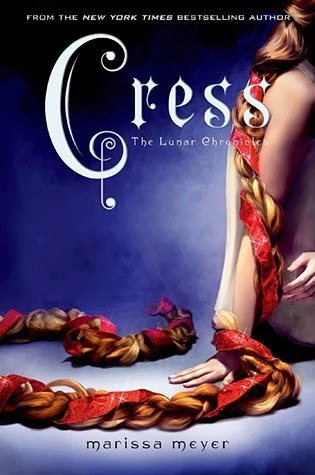
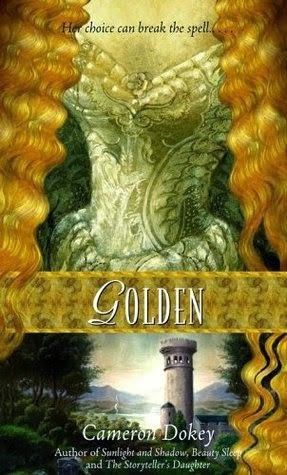
Cress by Marissa Meyer
Cinder and Captain Thorne are fugitives on the run, now with Scarlet and Wolf in tow. Together, they're plotting to overthrow Queen Levana and prevent her army from invading Earth. Their best hope lies with Cress, a girl trapped on a satellite since childhood who's only ever had her netscreens as company.
Golden by Cameron Dokey
Rapunsel has only two nights and one day in which to free a girl from a curse.
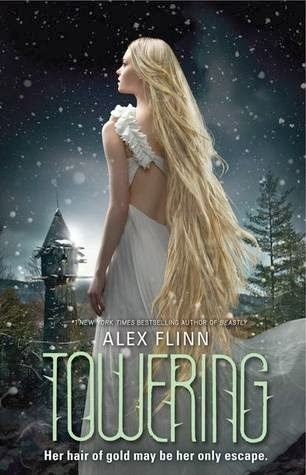
Towering by Alex Flinn
A contemporary retelling of Rapunzel told from the alternating perspectives of three teens whose fates unknowingly bind them together to destroy a greater evil.
Rumpelstiltskin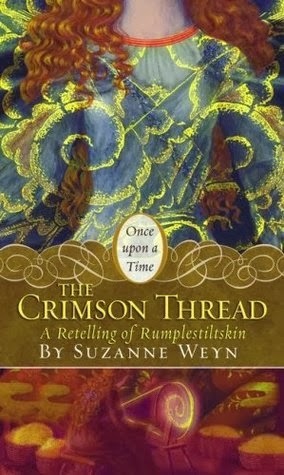
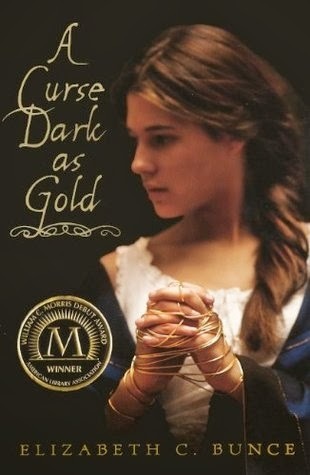
The Crimson Thread by Suzanne Weyn
It is 1880. Bertie has recently emigrated to New York from Ireland. Struggling to make ends meet and care for her younger siblings, Bertie finds work as a seamstress for textile tycoon, J.P. Wellington. When the Wellington family fortune is threatened, Bertie's father boasts that she can save the business. She can "practically spin straw into gold" Amazingly, overnight Bertie creates exquisite evening gowns, but only with the help of a mysterious man who uses an old spinning wheel. With dazzling crimson thread, he makes the dresses look like they are laced with real gold. Bertie would do anything to pay this man back for his help. When he asks for her firstborn child, Bertie agrees, never dreaming that he is serious.
A Curse Dark as Gold by Elizabeth C. Bunce
Upon the death of her father, seventeen-year-old Charlotte struggles to keep the family's woolen mill running in the face of an overwhelming mortgage and what the local villagers believe is a curse, but when a man capable of spinning straw into gold appears on the scene she must decide if his help is worth the price.
Sleeping Beauty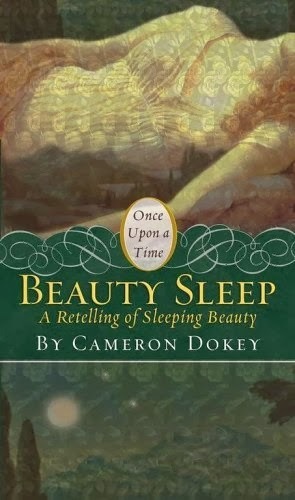

Beauty Sleep by Cameron DokeyPrincess Aurore learns that the curse that was placed on her at birth may hurt others, so she goes on a quest to end the evil magic. A Kiss in Time by Alex FlinnSixteen-year-old Princess Talia persuades seventeen-year-old Jack, the modern-day American who kissed her awake after a 300-year sleep, to take her to his Miami home, where she hopes to win his love before the witch who cursed her can spirit her away.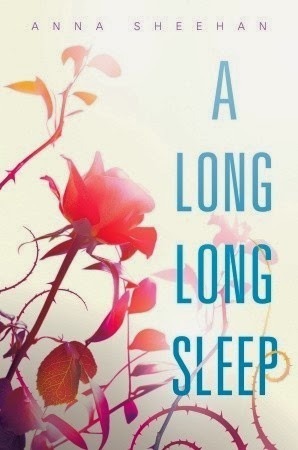 A Long, Long Sleep by Anna SheehanSixteen-year-old Rosalinda Fitzroy, heir to the multiplanetary corporation UniCorp, is awakened after sixty years in stasis to find that everyone she knew has died and as she tries to make a new life for herself, learns she is the target of a robot assassin. Kelly's review
A Long, Long Sleep by Anna SheehanSixteen-year-old Rosalinda Fitzroy, heir to the multiplanetary corporation UniCorp, is awakened after sixty years in stasis to find that everyone she knew has died and as she tries to make a new life for herself, learns she is the target of a robot assassin. Kelly's review
The Snow Queen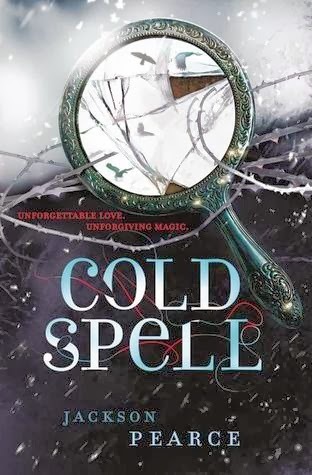
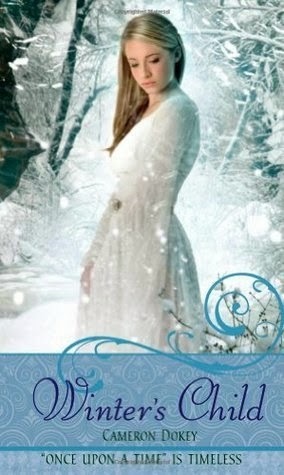
Cold Spell by Jackson Pearce
When her boyfriend disappears with a mysterious girl, seventeen-year-old Ginny leaves her hometown of Atlanta and fights wolves, escapes thieves, and braves the cold to rescue him.
Winter's Child by Cameron Dokey
A retelling of the Andersen tale in which childhood best friends, Kai and Grace, grow apart as teenagers after Grace spurns Kai's declaration of love, and a dejected Kai is lured away by the mysterious Snow Queen, leaving Grace to realize her loss and determined to find him and bring him back.
Snow White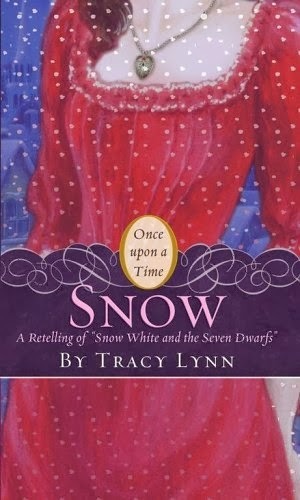
Nameless by Lili St. CrowIn this retelling of Snow White, sixteen-year-old Cami, a mortal raised by one of the powerful Families that rule magic-ridden New Haven, begins to uncover the secrets of her birth and why her past is threatening her now.
Snow by Tracy Lynn
A retelling tale of a princess who takes refuge from her wicked stepmother by fleeing to London. Story inspired by brothers Grimm.
Twelve Dancing Princesses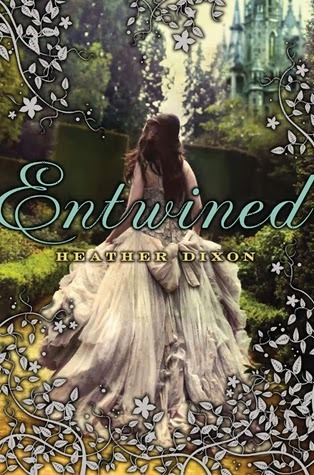
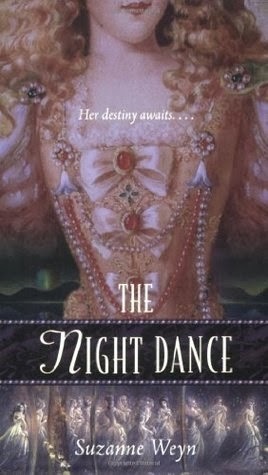
Entwined by Heather Dixon
Confined to their dreary castle while mourning their mother's death, Princess Azalea and her eleven sisters join The Keeper, who is trapped in a magic passageway, in a nightly dance that soon becomes nightmarish. Kimberly's review
The Night Dance by Suzanne Weyn
A knight falls in love with the youngest of twelve sisters, but they can only marry if he can discover where the sisters secretly go to dance. Inspired by the fairy tale of the twelve dancing princesses.
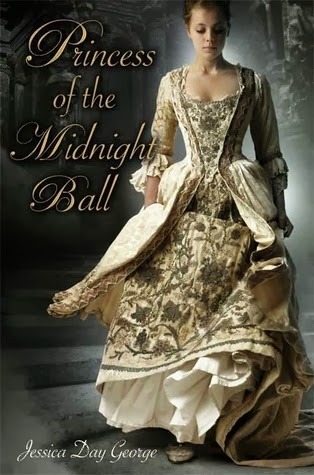
Princess of the Midnight Ball by Jessica Day George
A retelling of the tale of twelve princesses who wear out their shoes dancing every night, and of Galen, a former soldier now working in the king's gardens, who follows them in hopes of breaking the curse.
Short Stories/Anthologies The original stories were short stories, so it's natural that anthologies of fairy tale re-tellings abound as well.
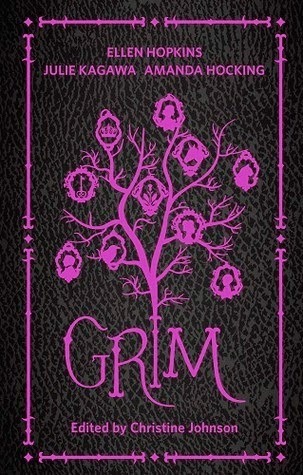
Faery Tales & Nightmares by Melissa MarrA collection of short stories featuring tales of characters from the Wicked Lovely novels that mix with accounts of new characters. Grim edited by Christine JohnsonInspired by classic fairy tales, but with a dark and sinister twist, Grim contains short stories from some of the best voices in young adult literature today.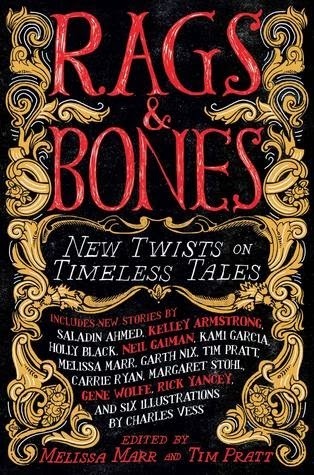
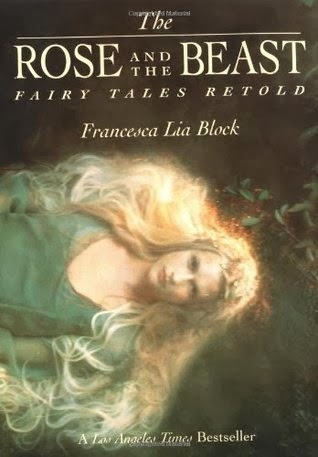
Rags and Bones: New Twists on Timeless Tales edited by Melissa Marr and Tim PrattIn this collection, award-winning and bestselling authors reimagine their favorite classic stories, the ones that have inspired, awed, and enraged them, the ones that have become ingrained in modern culture, and the ones that have been too long overlooked. The Rose and the Beast by Francesca Lia BlockNine classic fairy tales set in modern, magical landscapes and retold with a twist.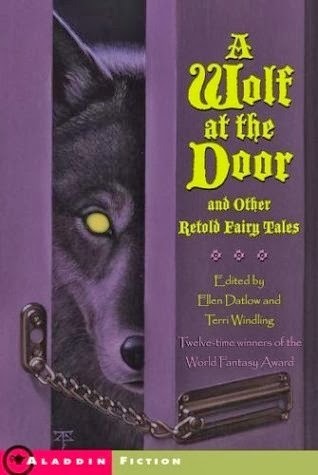
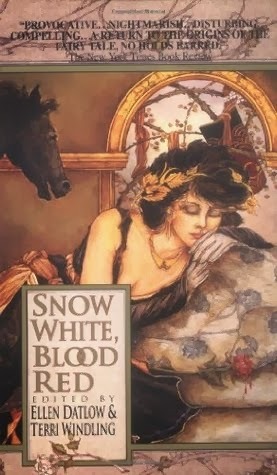
A Wolf at the Door edited by Ellen Datlow and Terri WindlingWhat ever happened to the seven dwarfs after Snow White ditched them? What was life like for the giant above the beanstalk? Readers need wonder no more. This collection of 13 fantasy short stories takes favorite folk tales on a wild spin through the imagination. The roster of authors includes Michael Cadnum, Jane Yolen, Garth Nix, Tanith Lee, and Gregory Maguire. (Datlow and Windling edited at least two more anthologies of retold fairy tales for younger readers.) Datlow and Windling also edited a number of anthologies of fairy tales retold for adults, beginning with Snow White, Blood Red. I've read a few of the collections, and if my memory serves me right, they're don't skimp on sex and gore, so hand them only to your most mature readers. Forthcoming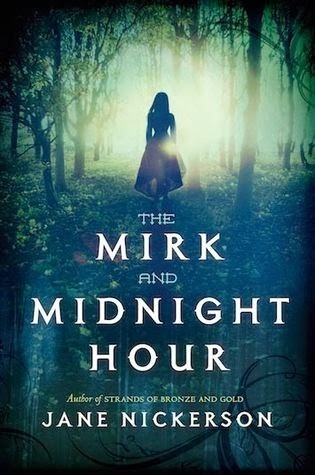
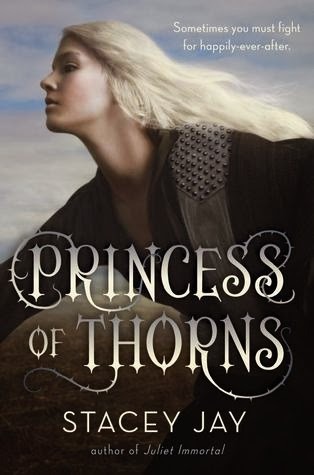
The Mirk and Midnight Hour by Jane Nickerson (March)
Seventeen-year-old Violet Dancey is spending the Civil War with a new stepmother and stepsister and her young cousin when she comes upon a wounded Yankee soldier, Thomas, who is being kept alive by mysterious voodoo practitioners. [Tam Lin] Princess of Thorns by Stacey Jay (December)Though she looks like a mere mortal, Princess Aurora is a fairy blessed with enhanced strength, bravery, and mercy yet cursed to destroy the free will of any male who kisses her. Disguised as a boy, she enlists the help of the handsome but also cursed Prince Niklaas to fight legions of evil and free her brother from the ogre queen who stole Aurora's throne ten years ago. Winter by Marissa Meyer (2015) This concluding volume re-tells Snow White.






 Related StoriesMusic and Musicality: Reviews from the Outstanding Books for the College Bound ListThe Winner's Curse by Marie RutkoskiRecent YA Reads
Related StoriesMusic and Musicality: Reviews from the Outstanding Books for the College Bound ListThe Winner's Curse by Marie RutkoskiRecent YA Reads
It's no surprise that fairy tale re-tellings have tremendous staying power, given how versatile they can be. As readers, I think we like the combination of the familiar and the strange; we are naturally curious to see how an author can transform something so old and well-known into something new and unusual. There's also something timeless about the original, bare-bones stories themselves. In many ways, fairy tales are the most basic of our stories, and even the most intricately-plotted of our modern tales usually draw from some sort of trope first found in a fairy tale or folk tale.
In my experience, teens are drawn to fairy tale re-tellings for the romance and adventure. The protagonists usually also go from a place of no power to a place of tremendous power, whether through the use of magic or simple resourcefulness. This is incredibly appealing to teens who may feel that they have zero power over their own lives.
While this guide will focus primarily on fairy tale re-tellings, teens who read them may also enjoy re-tellings of other classic stories, such as mythology, Robin Hood, King Arthur, Shakespeare, Bronte, and others. Epic Reads has created a truly Epic Chart of 162 Young Adult Retellings that covers a lot of this territory. It's well worth a look.
A few authors who are known for writing fairy tale re-tellings include Donna Jo Napoli, Robin McKinley, Cameron Dokey, Alex Flinn, and Jackson Pearce. Some of their books were published when I was a teen (or before!), but fairy tale re-tellings tend to stand the test of time a bit better than other sorts of stories. Their source material is timeless, after all. Provided they're not modernized re-tellings or saddled with dated covers, even 10 or 20 year old books should suit teen lovers of the genre just fine.
Simon Pulse published about 20 fairy tale re-tellings for teens between 2002 and 2010 written by various authors including Suzanne Weyn, Cameron Dokey, Debbie Viguie, Tracy Lynn, and Nancy Holder. A full list of those titles can be found at Simon and Schuster's Once Upon a Time website.
Below are a few YA fairy tale re-tellings published within the past five years (roughly), grouped by original story. Descriptions are from Worldcat or Goodreads. Are there any glaring omissions?
Beauty and the Beast


Of Beast and Beauty by Stacey Jay
When nineteen-year-old Gem of the Desert People, called Monstrous by the Smooth Skins, becomes the prisoner of the seventeen-year-old Smooth Skin queen, Isra, age-old prejudices begins to fall aside as the two begin to understand each other.
Beastly by Alex Flinn
A modern retelling of "Beauty and the Beast" from the point of view of the Beast, a vain Manhattan private school student who is turned into a monster and must find true love before he can return to his human form.


Belle by Cameron Dokey
In this retelling of the traditional tale, Belle, a skilled woodcarver, must carve the the legendary Heartwood to repay her father's debt to a fearsome beast that gave him shelter during a terrible storm.
Cruel Beauty by Rosamund Hodge
Since birth, Nyx has been betrothed to the evil ruler of her kingdom -- all because of a foolish bargain struck by her father. And since birth, she has been in training to kill him. With no choice but to fulfill her duty, Nyx resents her family for never trying to save her and hates herself for wanting to escape her fate. Still, on her seventeenth birthday, Nyx abandons everything she's ever known to marry the all-powerful, immortal Ignifex. Her plan? Seduce him, destroy his enchanted castle, and break the nine-hundred-year-old curse he put on her people. Kimberly's review

Dark Triumph by Robin LaFevers
Sybella's duty as Death's assassin in 15th-century France forces her return home to the personal hell that she had finally escaped. Love and romance, history and magic, vengeance and salvation converge in this sequel to Grave Mercy. Kimberly's review
Bluebeard

Strands of Bronze and Gold by Jane Nickerson
After the death of her father in 1855, seventeen-year-old Sophia goes to live with her wealthy and mysterious godfather at his gothic mansion, Wyndriven Abbey, in Mississippi, where many secrets lie hidden. Kimberly's review
Cinderella


Ash by Malinda Lo
In this variation on the Cinderella story, Ash grows up believing in the fairy realm that the king and his philosophers have sought to suppress, until one day she must choose between a handsome fairy cursed to love her and the King's Huntress whom she loves.
Before Midnight by Cameron Dokey
In this retelling of the Perrault fairy tale, Cendrillon's father, grief stricken over the death of his wife, leaves his baby daughter to be brought up by servants together with an unidentified infant boy until the day, sixteen-years-later, when a new stepmother with two daughters arrives and changes their lives forever.


Bewitching by Alex Flinn
Tells the story of Kendra, a witch, and the first three-hundred years of her life, including takes on a classic fairy tale, the 1666 plague in Britain, the Titanic disaster, and the story of a modern-day, plain stepsister.
Cinder by Marissa Meyer
As plague ravages the overcrowded Earth, observed by a ruthless lunar people, Cinder, a gifted mechanic and cyborg, becomes involved with handsome Prince Kai and must uncover secrets about her past in order to protect the world in this futuristic take on the Cinderella story. Kimberly's review


Shadows on the Moon by Zoe Marriott
Trained in the magical art of shadow-weaving, sixteen-year-old Suzume, who is able to re-create herself in any form, is destined to use her skills to steal the heart of a prince in a revenge pot. Kimberly's review
Wayfarer by Lili St. Crow
In this retelling of Cinderella, Ellen Sinder's violent stepmother terrifies her, her plan for surviving and getting through high school quietly begins to unravel, and Auntie, an odd old woman who takes her in, may not be as kindly as she appears.
East of the Sun, West of the Moon


East by Edith PattouA young woman journeys to a distant castle on the back of a great white bear who is the victim of a cruel enchantment.
Ice by Sarah Beth DurstA modern-day retelling of "East o' the Sun, West o' the Moon" in which eighteen-year-old Cassie learns that her grandmother's fairy tale is true when a Polar Bear King comes to claim her for his bride and she must decide whether to go with him and save her long-lost mother, or continue helping her father with his research.
 Sun and Moon, Ice and Snow by Jessica Day George A girl travels east of the sun and west of the moon to free her beloved prince from a magic spell.
Sun and Moon, Ice and Snow by Jessica Day George A girl travels east of the sun and west of the moon to free her beloved prince from a magic spell.The Frog Prince


Enchanted by Alethea Kontis
When Sunday Woodcutter, the youngest of seven sisters named for the days of the week, kisses an enchanted frog, the frog transforms back into Rumbold, the crown prince of Arilland--a man Sunday's family despises.
Water Song by Suzanne Weyn
Stranded in war-torn Belgium, Emma Pennington finds a wounded American soldier carrying vital information for the Allies and protects him from the Germans occupying her family estate.
The Goose Girl

The Goose Girl by Shannon Hale
On her way to marry a prince she's never met, Princess Anidori is betrayed by her guards and her lady-in-waiting and must become a goose girl to survive until she can reveal her true identity and reclaim the crown that is rightfully hers.
Hansel and Gretel

Sweetly by Jackson Pearce
When the owner of a candy shop molds magical treats that instill confidence, bravery, and passion, eighteen-year-old Gretchen's haunted childhood memories of her twin sister's abduction by a witch-like monster begin to fade until girls start vanishing at the annual chocolate festival.
Jack and the Beanstalk
 The World Above by Cameron DokeyWhen her twin brother, Jack, disappears after scaling a magical beanstalk in an effort to reclaim their destitute family's riches, Gen enters the mysterious "Land Above" and confronts a dangerous giant, in a reimagining of the classic tale, "Jack and the Beanstalk."
The World Above by Cameron DokeyWhen her twin brother, Jack, disappears after scaling a magical beanstalk in an effort to reclaim their destitute family's riches, Gen enters the mysterious "Land Above" and confronts a dangerous giant, in a reimagining of the classic tale, "Jack and the Beanstalk."The Little Mermaid


Fathomless by Jackson Pearce
Celia, who shares mental powers with her triplet sisters, finds competition for a handsome boy with Lo, a sea monster who must persuade a mortal to love her and steal his soul to earn back her humanity.
Midnight Pearls by Debbie Viguie
A retelling of "The Little Mermaid" in which Pearl, a teenaged girl who was discovered in the sea as a small child by a fisherman and treated with scorn by the villagers ever since, falls in love with James, a prince, and faces powerful forces--human and magical--determined to tear them apart.
Little Red Riding Hood


Scarlet by Marissa Meyer
Scarlet Benoit and Wolf, a street fighter who may have information about her missing grandmother, join forces with Cinder as they try to stay one step ahead of the vicious Lunar Queen Levana in this story inspired by Little Red Riding Hood. Kimberly's review Scarlet Moon by Debbie ViguieRuth's grandmother lives in the forest, banished there for the "evil" that the townsfolk believed she practiced. Amidst these dark days, a new man enters Ruth's life. William is a noble with a hot temper and a bad name, and he makes her shiver. But the young man is prey to his heritage, a curse placed on his family ages ago, and each male of the family has strange blood running in his veins. Now Ruth must come face-to-face with his destiny at Grandma's house.

Sisters Red by Jackson Pearce
After a Fenris, or werewolf, killed their grandmother and almost killed them, sisters Scarlett and Rosie March devote themselves to hunting and killing the beasts that prey on teenaged girls, learning how to lure them with red cloaks and occasionally using the help of their old friend, Silas, the woodsman's son. Kimberly's review
Maid Maleen

Book of a Thousand Days by Shannon Hale
Fifteen-year-old Dashti, sworn to obey her sixteen-year-old mistress, the Lady Saren, shares Saren's years of punishment locked in a tower, then brings her safely to the lands of her true love, where both must hide who they are as they work as kitchen maids.
Rapunzel


Cress by Marissa Meyer
Cinder and Captain Thorne are fugitives on the run, now with Scarlet and Wolf in tow. Together, they're plotting to overthrow Queen Levana and prevent her army from invading Earth. Their best hope lies with Cress, a girl trapped on a satellite since childhood who's only ever had her netscreens as company.
Golden by Cameron Dokey
Rapunsel has only two nights and one day in which to free a girl from a curse.

Towering by Alex Flinn
A contemporary retelling of Rapunzel told from the alternating perspectives of three teens whose fates unknowingly bind them together to destroy a greater evil.
Rumpelstiltskin


The Crimson Thread by Suzanne Weyn
It is 1880. Bertie has recently emigrated to New York from Ireland. Struggling to make ends meet and care for her younger siblings, Bertie finds work as a seamstress for textile tycoon, J.P. Wellington. When the Wellington family fortune is threatened, Bertie's father boasts that she can save the business. She can "practically spin straw into gold" Amazingly, overnight Bertie creates exquisite evening gowns, but only with the help of a mysterious man who uses an old spinning wheel. With dazzling crimson thread, he makes the dresses look like they are laced with real gold. Bertie would do anything to pay this man back for his help. When he asks for her firstborn child, Bertie agrees, never dreaming that he is serious.
A Curse Dark as Gold by Elizabeth C. Bunce
Upon the death of her father, seventeen-year-old Charlotte struggles to keep the family's woolen mill running in the face of an overwhelming mortgage and what the local villagers believe is a curse, but when a man capable of spinning straw into gold appears on the scene she must decide if his help is worth the price.
Sleeping Beauty


Beauty Sleep by Cameron DokeyPrincess Aurore learns that the curse that was placed on her at birth may hurt others, so she goes on a quest to end the evil magic. A Kiss in Time by Alex FlinnSixteen-year-old Princess Talia persuades seventeen-year-old Jack, the modern-day American who kissed her awake after a 300-year sleep, to take her to his Miami home, where she hopes to win his love before the witch who cursed her can spirit her away.
 A Long, Long Sleep by Anna SheehanSixteen-year-old Rosalinda Fitzroy, heir to the multiplanetary corporation UniCorp, is awakened after sixty years in stasis to find that everyone she knew has died and as she tries to make a new life for herself, learns she is the target of a robot assassin. Kelly's review
A Long, Long Sleep by Anna SheehanSixteen-year-old Rosalinda Fitzroy, heir to the multiplanetary corporation UniCorp, is awakened after sixty years in stasis to find that everyone she knew has died and as she tries to make a new life for herself, learns she is the target of a robot assassin. Kelly's reviewThe Snow Queen


Cold Spell by Jackson Pearce
When her boyfriend disappears with a mysterious girl, seventeen-year-old Ginny leaves her hometown of Atlanta and fights wolves, escapes thieves, and braves the cold to rescue him.
Winter's Child by Cameron Dokey
A retelling of the Andersen tale in which childhood best friends, Kai and Grace, grow apart as teenagers after Grace spurns Kai's declaration of love, and a dejected Kai is lured away by the mysterious Snow Queen, leaving Grace to realize her loss and determined to find him and bring him back.
Snow White

Nameless by Lili St. CrowIn this retelling of Snow White, sixteen-year-old Cami, a mortal raised by one of the powerful Families that rule magic-ridden New Haven, begins to uncover the secrets of her birth and why her past is threatening her now.
Snow by Tracy Lynn
A retelling tale of a princess who takes refuge from her wicked stepmother by fleeing to London. Story inspired by brothers Grimm.
Twelve Dancing Princesses


Entwined by Heather Dixon
Confined to their dreary castle while mourning their mother's death, Princess Azalea and her eleven sisters join The Keeper, who is trapped in a magic passageway, in a nightly dance that soon becomes nightmarish. Kimberly's review
The Night Dance by Suzanne Weyn
A knight falls in love with the youngest of twelve sisters, but they can only marry if he can discover where the sisters secretly go to dance. Inspired by the fairy tale of the twelve dancing princesses.

Princess of the Midnight Ball by Jessica Day George
A retelling of the tale of twelve princesses who wear out their shoes dancing every night, and of Galen, a former soldier now working in the king's gardens, who follows them in hopes of breaking the curse.
Short Stories/Anthologies The original stories were short stories, so it's natural that anthologies of fairy tale re-tellings abound as well.


Faery Tales & Nightmares by Melissa MarrA collection of short stories featuring tales of characters from the Wicked Lovely novels that mix with accounts of new characters. Grim edited by Christine JohnsonInspired by classic fairy tales, but with a dark and sinister twist, Grim contains short stories from some of the best voices in young adult literature today.


Rags and Bones: New Twists on Timeless Tales edited by Melissa Marr and Tim PrattIn this collection, award-winning and bestselling authors reimagine their favorite classic stories, the ones that have inspired, awed, and enraged them, the ones that have become ingrained in modern culture, and the ones that have been too long overlooked. The Rose and the Beast by Francesca Lia BlockNine classic fairy tales set in modern, magical landscapes and retold with a twist.


A Wolf at the Door edited by Ellen Datlow and Terri WindlingWhat ever happened to the seven dwarfs after Snow White ditched them? What was life like for the giant above the beanstalk? Readers need wonder no more. This collection of 13 fantasy short stories takes favorite folk tales on a wild spin through the imagination. The roster of authors includes Michael Cadnum, Jane Yolen, Garth Nix, Tanith Lee, and Gregory Maguire. (Datlow and Windling edited at least two more anthologies of retold fairy tales for younger readers.) Datlow and Windling also edited a number of anthologies of fairy tales retold for adults, beginning with Snow White, Blood Red. I've read a few of the collections, and if my memory serves me right, they're don't skimp on sex and gore, so hand them only to your most mature readers. Forthcoming


The Mirk and Midnight Hour by Jane Nickerson (March)
Seventeen-year-old Violet Dancey is spending the Civil War with a new stepmother and stepsister and her young cousin when she comes upon a wounded Yankee soldier, Thomas, who is being kept alive by mysterious voodoo practitioners. [Tam Lin] Princess of Thorns by Stacey Jay (December)Though she looks like a mere mortal, Princess Aurora is a fairy blessed with enhanced strength, bravery, and mercy yet cursed to destroy the free will of any male who kisses her. Disguised as a boy, she enlists the help of the handsome but also cursed Prince Niklaas to fight legions of evil and free her brother from the ogre queen who stole Aurora's throne ten years ago. Winter by Marissa Meyer (2015) This concluding volume re-tells Snow White.







 Related StoriesMusic and Musicality: Reviews from the Outstanding Books for the College Bound ListThe Winner's Curse by Marie RutkoskiRecent YA Reads
Related StoriesMusic and Musicality: Reviews from the Outstanding Books for the College Bound ListThe Winner's Curse by Marie RutkoskiRecent YA Reads
Published on March 05, 2014 22:00
March 4, 2014
Music and Musicality: Reviews from the Outstanding Books for the College Bound List
I've been working through talking about the different books on the Outstanding Books for the College Bound list over the last few weeks, and it's been interesting to not only talk about a year's worth of work, but it's been interesting to see the different themes that have popped up beyond the categories the list has set up that mirror the liberal arts. A couple of weeks ago, I highlighted books tackling religion and spirituality, followed by books that looked at football and football culture. This week, I thought I'd talk about four books on the Arts and Humanities list that all dive into some component of music. These are four very different books -- two are non-fiction, two are fiction, but all speak to an element of music and/or musicality and the way music impacts us.
 Ready for a Brand New Beat: How "Dancing in the Streets" Became the Anthem for a Changing America by Mark Kurlansky
Ready for a Brand New Beat: How "Dancing in the Streets" Became the Anthem for a Changing America by Mark Kurlansky
Admittedly, this is a book I had a hard time reading and ultimately ended up choosing not to finish, but it's also one that I completely saw the merit in and understand why committee members loved it and wanted it on our list.
Kurlansky's a great writer, and in this book, he looks at how the song "Dancing in the Street" came to be. It's a story about not just the song and the power behind it, but it's about the 1960s in Motown, as well as about race during the civil rights era. Woven in is how the song became an anthem for an entire generation -- while many people may be familiar with the really dance worthy version of "Dancing in the Street," Kurlansky talks about how the song has been rendered in far different manners by very different artists. In talking about that, he's able to explore how once a piece of work is out there, it takes on a life of its own.
Readers who like Motown, classic rock, or are interested in the progression of music and the social climate of this time period will dig this book. There is an extensive list of versions of the song included, so readers who want to dive in deeper can seek out this versions and actually listen through the history and thesis presented.
 The Holy or the Broken: Leonard Cohen, Jeff Buckley, and the Unlikely Ascent of "Hallelujah" by Alan Light
The Holy or the Broken: Leonard Cohen, Jeff Buckley, and the Unlikely Ascent of "Hallelujah" by Alan Light
Where Kurlansky's exploration of "Dancing in the Street" didn't work for me, Light's book about "Hallelujah" did work for me. Like Kurlansky, this is a look at how a song changes and becomes something new and different as new artists choose to work and adapt it to their own interpretations. Unlike Kurlansky's book, this one is far less about sociopolitical and cultural aspects surrounding the song and a lot more about how a song becomes the kind of song everyone knows (and how it becomes the kind of song no longer allowed to be reinterpreted on "American Idol").
I'm familiar with "Hallelujah" because I'm quite familiar with Buckley. I went through a phase in high school where I became fascinated with his story, and it was through that I learned about the song and about the song having had its start with Cohen. However, I didn't know the history of the song and Light did an excellent job talking about how Cohen wrote and presented the song against how Buckley chose to interpret and sing the song. While reading this one, I pulled up YouTube to look up every rendition discussed and it only aided in my enjoyment of the book.
Teens will be familiar with "Hallelujah" because of Idol or because of it having been a part of Shrek, and each of those things are talked about in here. There's discussion of how the song has been interpreted as religious, as well as how it's been interpreted to be the exact opposite of religious and how it is both of those interpretations can be accepted and embraced. Cohen's original vision of the song, as well as some of the verses left off the Buckley track, are talked about. But I think my favorite thing was watching how the two of them sang the song as I read Light's take on it -- Buckley's heart is bleeding while Cohen sings with a look that suggests it's darkly humorous.
This one's for the pop culture lovers, as well as those who like good -- though not necessarily hard-hitting -- music journalism.
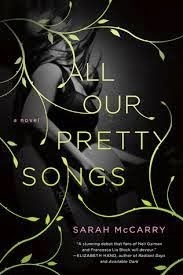

Two YA fiction titles are included on the Arts & Humanities list, too, which feature music in some capacity. Both are books I've talked about here and here, so I won't go into too much depth, other than to talk a bit as to why they're on the list and how they work in the music and musicality theme.
All Our Pretty Songs by Sarah McCarry: I talked about the feminist aspect of this book, but something I didn't touch on was the musicality of it. This is a novel that's not only lushly written, but it's a story set in the grunge heavy, 1990s Pacific Northwest. McCarry's story is a retelling of Orpheus myth, and the main character (who is unnamed) and her best friend Aurora are drawn to a boy named Jack because of his musical charm. While the focus isn't the music, music is a huge part of the story and it's the bond that ties the two girls together. This could have easily fit into the Literature & Languages category, but it was the music, combined with the story of a tighter-than-tight friendship between two girls, that made it fit the Arts & Humanities list.
It's a challenging, literary title that will resonate really strongly with the right readers.
The Lucy Variations by Sara Zarr: This is a story about a girl who was forced into the "family business" of piano performance, as she's a legacy. It's what the Beck-Moreaus do. But after being pushed to the brink, Lucy chooses to walk away from everything unraveling before her as a career pianist. The story follows as she learns to rediscover herself after performance, as much as it's about Lucy coming to learn that she can love playing piano completely and entirely for herself, as opposed to doing it to meet the expectations of those around her.
The pursuit of passion and the exploration of how one chooses to devote to art as a career or art as a hobby should hit strong notes for those readers who've ever had to think about what it means to make art and what it means to be an artist.






 Related StoriesYA Adaptations of Adult NovelsFootball Culture: Reviews and Thoughts from Outstanding Books for the College BoundA Year in Committee Life
Related StoriesYA Adaptations of Adult NovelsFootball Culture: Reviews and Thoughts from Outstanding Books for the College BoundA Year in Committee Life
 Ready for a Brand New Beat: How "Dancing in the Streets" Became the Anthem for a Changing America by Mark Kurlansky
Ready for a Brand New Beat: How "Dancing in the Streets" Became the Anthem for a Changing America by Mark KurlanskyAdmittedly, this is a book I had a hard time reading and ultimately ended up choosing not to finish, but it's also one that I completely saw the merit in and understand why committee members loved it and wanted it on our list.
Kurlansky's a great writer, and in this book, he looks at how the song "Dancing in the Street" came to be. It's a story about not just the song and the power behind it, but it's about the 1960s in Motown, as well as about race during the civil rights era. Woven in is how the song became an anthem for an entire generation -- while many people may be familiar with the really dance worthy version of "Dancing in the Street," Kurlansky talks about how the song has been rendered in far different manners by very different artists. In talking about that, he's able to explore how once a piece of work is out there, it takes on a life of its own.
Readers who like Motown, classic rock, or are interested in the progression of music and the social climate of this time period will dig this book. There is an extensive list of versions of the song included, so readers who want to dive in deeper can seek out this versions and actually listen through the history and thesis presented.
 The Holy or the Broken: Leonard Cohen, Jeff Buckley, and the Unlikely Ascent of "Hallelujah" by Alan Light
The Holy or the Broken: Leonard Cohen, Jeff Buckley, and the Unlikely Ascent of "Hallelujah" by Alan LightWhere Kurlansky's exploration of "Dancing in the Street" didn't work for me, Light's book about "Hallelujah" did work for me. Like Kurlansky, this is a look at how a song changes and becomes something new and different as new artists choose to work and adapt it to their own interpretations. Unlike Kurlansky's book, this one is far less about sociopolitical and cultural aspects surrounding the song and a lot more about how a song becomes the kind of song everyone knows (and how it becomes the kind of song no longer allowed to be reinterpreted on "American Idol").
I'm familiar with "Hallelujah" because I'm quite familiar with Buckley. I went through a phase in high school where I became fascinated with his story, and it was through that I learned about the song and about the song having had its start with Cohen. However, I didn't know the history of the song and Light did an excellent job talking about how Cohen wrote and presented the song against how Buckley chose to interpret and sing the song. While reading this one, I pulled up YouTube to look up every rendition discussed and it only aided in my enjoyment of the book.
Teens will be familiar with "Hallelujah" because of Idol or because of it having been a part of Shrek, and each of those things are talked about in here. There's discussion of how the song has been interpreted as religious, as well as how it's been interpreted to be the exact opposite of religious and how it is both of those interpretations can be accepted and embraced. Cohen's original vision of the song, as well as some of the verses left off the Buckley track, are talked about. But I think my favorite thing was watching how the two of them sang the song as I read Light's take on it -- Buckley's heart is bleeding while Cohen sings with a look that suggests it's darkly humorous.
This one's for the pop culture lovers, as well as those who like good -- though not necessarily hard-hitting -- music journalism.


Two YA fiction titles are included on the Arts & Humanities list, too, which feature music in some capacity. Both are books I've talked about here and here, so I won't go into too much depth, other than to talk a bit as to why they're on the list and how they work in the music and musicality theme.
All Our Pretty Songs by Sarah McCarry: I talked about the feminist aspect of this book, but something I didn't touch on was the musicality of it. This is a novel that's not only lushly written, but it's a story set in the grunge heavy, 1990s Pacific Northwest. McCarry's story is a retelling of Orpheus myth, and the main character (who is unnamed) and her best friend Aurora are drawn to a boy named Jack because of his musical charm. While the focus isn't the music, music is a huge part of the story and it's the bond that ties the two girls together. This could have easily fit into the Literature & Languages category, but it was the music, combined with the story of a tighter-than-tight friendship between two girls, that made it fit the Arts & Humanities list.
It's a challenging, literary title that will resonate really strongly with the right readers.
The Lucy Variations by Sara Zarr: This is a story about a girl who was forced into the "family business" of piano performance, as she's a legacy. It's what the Beck-Moreaus do. But after being pushed to the brink, Lucy chooses to walk away from everything unraveling before her as a career pianist. The story follows as she learns to rediscover herself after performance, as much as it's about Lucy coming to learn that she can love playing piano completely and entirely for herself, as opposed to doing it to meet the expectations of those around her.
The pursuit of passion and the exploration of how one chooses to devote to art as a career or art as a hobby should hit strong notes for those readers who've ever had to think about what it means to make art and what it means to be an artist.







 Related StoriesYA Adaptations of Adult NovelsFootball Culture: Reviews and Thoughts from Outstanding Books for the College BoundA Year in Committee Life
Related StoriesYA Adaptations of Adult NovelsFootball Culture: Reviews and Thoughts from Outstanding Books for the College BoundA Year in Committee Life
Published on March 04, 2014 22:00
March 3, 2014
The Winner's Curse by Marie Rutkoski
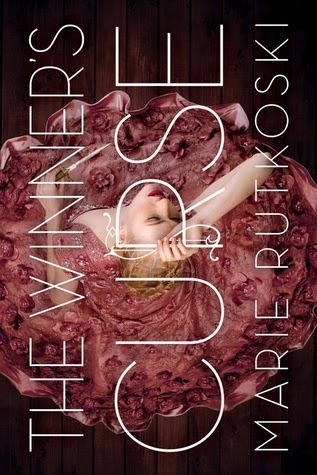 The plot of
The Winner’s Curse
is fairly simple: Kestrel, the daughter of a Valorian general, purchases a Herrani slave at the slave market. It’s an impulse on her part, but completely calculated on the slave’s, whose name is Arin. He has plans of his own, and unknown to Kestrel and the general, he has a very good reason for causing himself to be placed in that position.
The plot of
The Winner’s Curse
is fairly simple: Kestrel, the daughter of a Valorian general, purchases a Herrani slave at the slave market. It’s an impulse on her part, but completely calculated on the slave’s, whose name is Arin. He has plans of his own, and unknown to Kestrel and the general, he has a very good reason for causing himself to be placed in that position. When the Valorians conquered the Herrani, they took the Herrani as slaves. Now the Valorians live in the Herrani homes, and a whole generation of Herrani are growing up barely remembering what it was like to be free. Meanwhile, the Valorian empire continues to wage war on its neighbors, determined to further grow its holdings.
A book like this could very easily be ludicrous, offensive, or both. A situation like this is not pure fantasy; in her author’s note, Rutkoski explains how such things were and are common. Her American readers should know this already. But Rutkoski is a phenomenal writer. She’s careful to allow Kestrel to be sympathetic without condoning her actions. She doesn’t relish in the misery of the conquered or make them out to be uniformly victimized. It’s a tricky tightrope to walk, but Rutkoski does it well.
Despite its lack of magic or strange creatures, this is a fantasy novel, and its world-building is part of what makes it soar. Rutkoski excels at creating new places and showing them to us in a way that feels natural. We learn a little bit about the history of the Valorians and Herrani from their history books, but most of what we learn comes from their lived experiences in this world. This is the very definition of showing instead of telling. We learn about the slave market because Kestrel is there, seeing and smelling and experiencing it. We learn about Valorian parties because Kestrel goes to them, and we see them through her eyes. We learn about the slave quarters because Arin lives and works there. Rutkoski’s world is detailed and complex and fascinating. It recalls a memory of ancient Rome or Greece, but it’s also wholly new. (I appreciated the mix of oppression and liberation that women face in the Valorian empire, as well. They are trained fighters and many of them join the army, but they also are not allowed to venture anywhere alone. This is just one example of how original and well-crafted the world is.)
Another aspect that sets this book head and shoulders above its peers is the romance. Teen novels are no strangers to romance, but I can't say there are many that are quite this intense. Intensity comes not only from the depth of feeling espoused between the leads, but also from just how well the two click on the page. I have to give major kudos to Rutkoski's writing. She knows just when to let Kestrel and Arin touch - and when to pull them apart. She allows their feelings to develop organically, from many conversations and observations. Through their observations of each other, we learn how they see themselves, how they see each other, and how they really are. (These can often be three very different things.) It's a brilliant way to explore character and it makes the romance that much deeper.
At times, it hurts just to read the book. Because Kestrel and Arin are fated to be at odds with each other, it’s a given that no matter what happens, one or both of them will end up in pain (emotional, physical, or both). Rutkoski makes us care deeply about both characters – so deeply that their pain becomes ours, and it’s difficult to see any end where both will be happy.
The book isn't action-heavy. Most of it focuses on politics and society, but it does have two pretty major plot shifts (I wouldn't call them twists). The second one provides an ending of sorts, giving us a full story in this first volume, and some measure of satisfaction. It once again changes the dynamic between Kestrel and Arin; I'm eager to see where Rutkoski takes the relationship in further installments, not to mention how she develops the relationship between the Valorian empire and the people it has subjugated.
Review copy provided by the publisher. The Winner's Curse is available today.







 Related StoriesCruel Beauty by Rosamund HodgeRecent YA ReadsFantasy Without Magic
Related StoriesCruel Beauty by Rosamund HodgeRecent YA ReadsFantasy Without Magic
Published on March 03, 2014 22:00



